Afropollination: Residency Power in the Global Underground
This is a story of explosive creativity, diehard cultural exchange, and avant-garde community from Kampala to Hamburg.
In 2022 and 2023 Piranha Arts, in collaboration with Nyege Nyege, organized two six-week residencies in Kampala, Uganda and Hamburg, Germany. Thirty artists from across Africa and Germany came together to deconstruct and reimagine their art for a new generation of creatives. Practicing, performing, and exchanging in unlikely places, across languages and hemispheres, this residency program attacked ideas of appropriation, heritage, collaboration, and creation. Beyond difficulty and drama, past the ecstatic noise of festivals, this is a story of explosive creativity, diehard cultural exchange, and avant-garde community, from Kampala to Hamburg.
When Nyege Nyege met Piranha Arts
Nyege Nyege and its roster of 50 artists teamed up with Piranha Arts, a Berlin independent creative agency, after meeting at the 2019 WOMEX exposition in Tampere, Finland. It was during this festival showcase, known for giving light to the emerging global underground, that the two began a discussion that would trigger a massive movement of people and ideas. A residency program, between Kampala and Hamburg, with stopovers at festivals and an expanded vision of creative arts. Neither Nyege nor Piranha were new to the idea of residencies, but the scale and ambition of the exchange was unprecedented.
Nyege Nyege is a Uganda based collective that has been giving audiences the “uncontrollable urge to dance” since its founding in 2013. A record label, booking agency, and festival organizer, Nyege Nyege has been pushing hardcore noise around the world both at their local festival along the Nile and across the electronic avant-garde’s most prestigious stages. Piranha Arts, on the other hand, is known for the Karneval der Kulturen in Berlin, a million strong annual street parade going since 1996. Piranha also pilots the WOMEX music showcase, conference and expo and runs the independent record & publishing label Piranha. It’s a match of like-minded structures pushing culture forward.
Once the idea was set in motion, a roster of artists were selected by Nyege Nyege from both within their record label and across the German electronic landscape. From there, groups are made, schedules are laid out, planes, trains, and buses are boarded heading for Kampala or Hamburg. No specific final products are defined, collaborative groups are either self initiated or suggested, but the constraints of the residency are manifest in the faces and spaces. In this case, a pink villa and a repurposed German fishing vessel.
Inside the Nyege Nyege villa
Hidden down a small dirt road on the edge of Kampala is the Nyege Nyege villa. It’s a two story compound with a large garden, courtyard and plenty of space to relax and create. The afternoons are often warm and moist, the dusk light exaggerating the pink facade. Inside walls are plastered with posters of former parties or iconic in-house records. In the middle sits a “war room” splattered with machines, microphones and adapters, where the Nyege team makes plans, sits in wait, or furiously scribbles to-do’s onto a whiteboard.
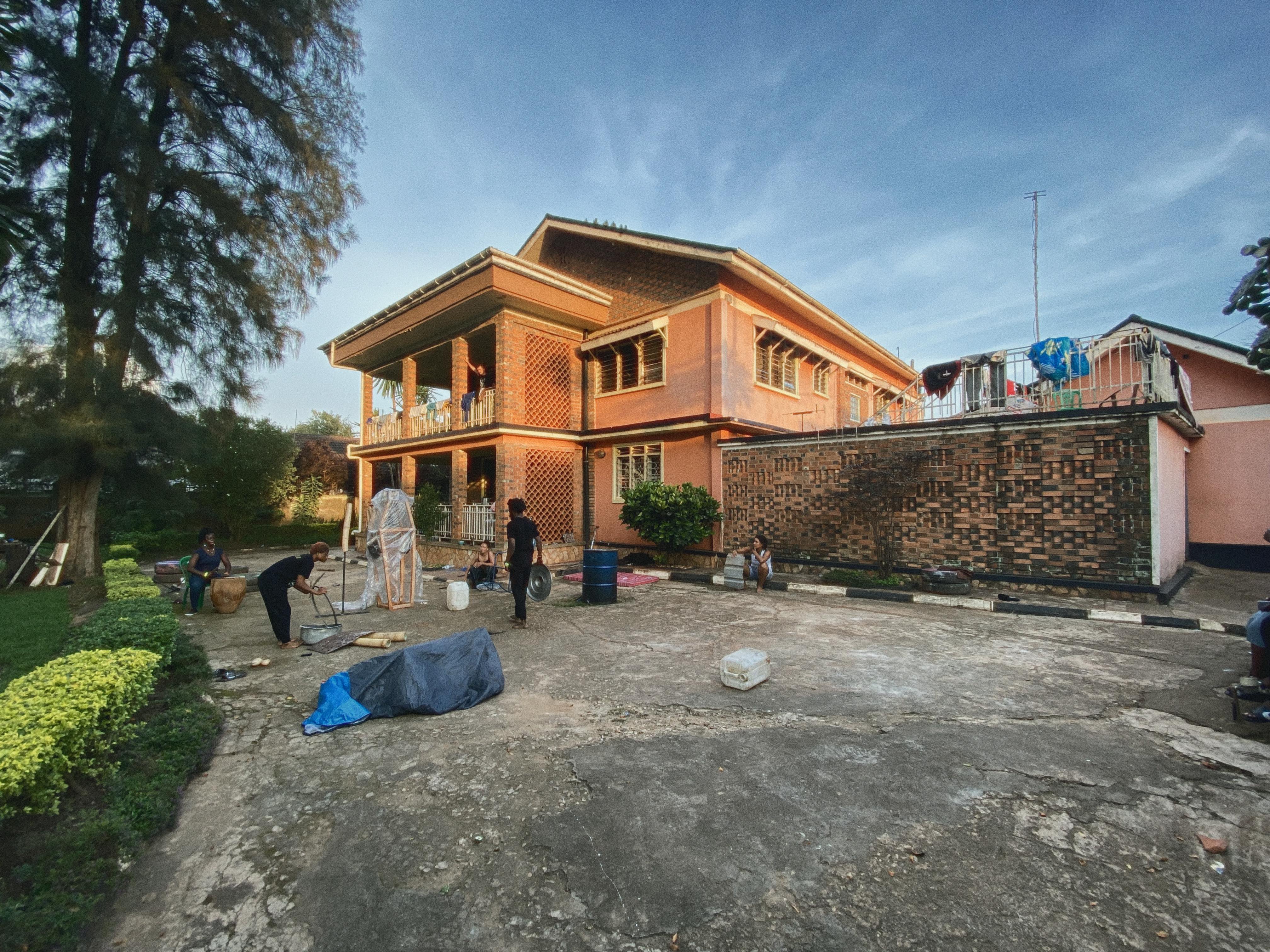

Here, the artists work together on a chaotic schedule, music bursting from the rooms, and tagalongs coming and going with questions and ideas.
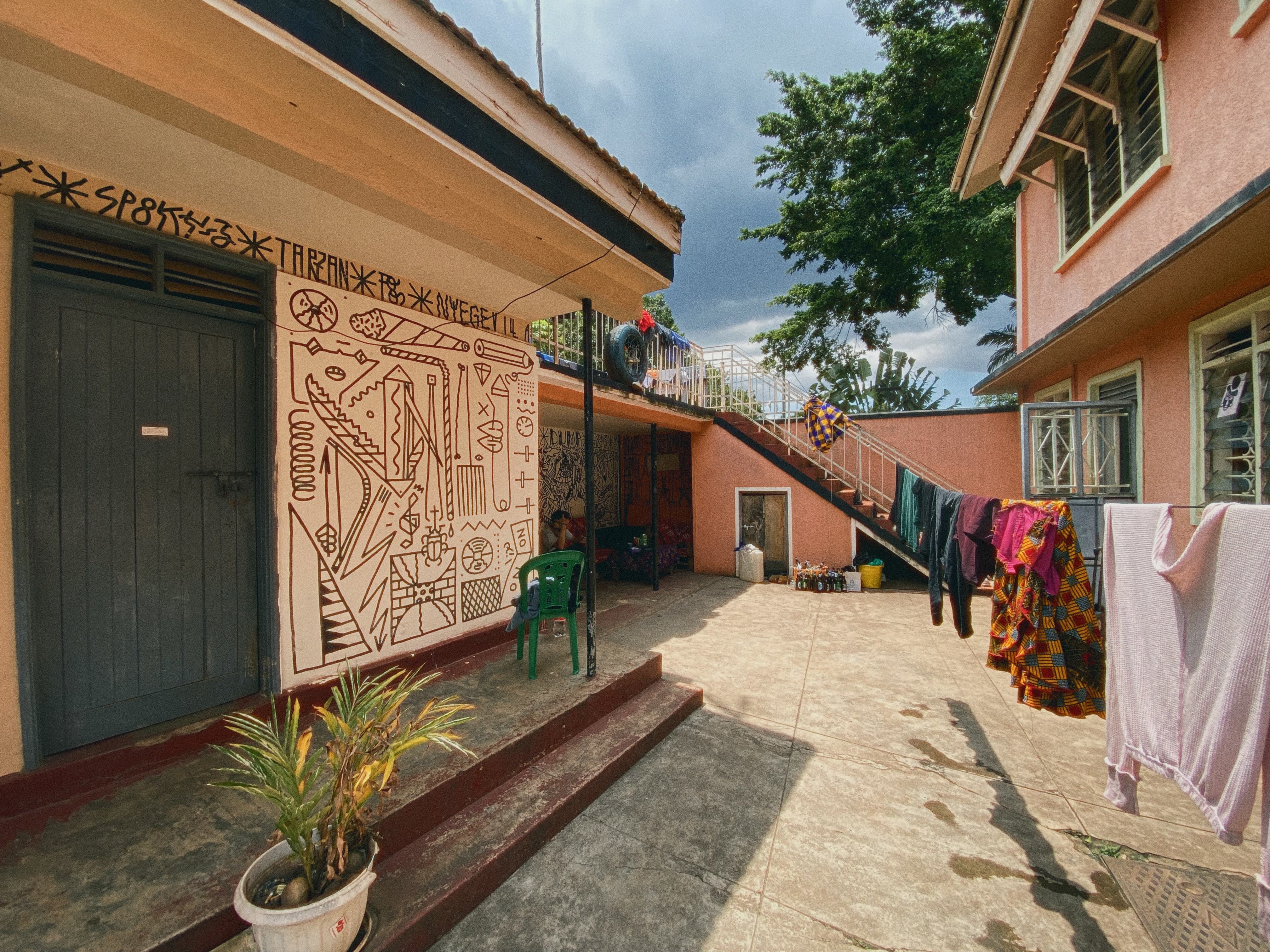

In rare periods of calm, residents take pause in the courtyard, eat a meal, and brush away the ragtag group of stray dogs.
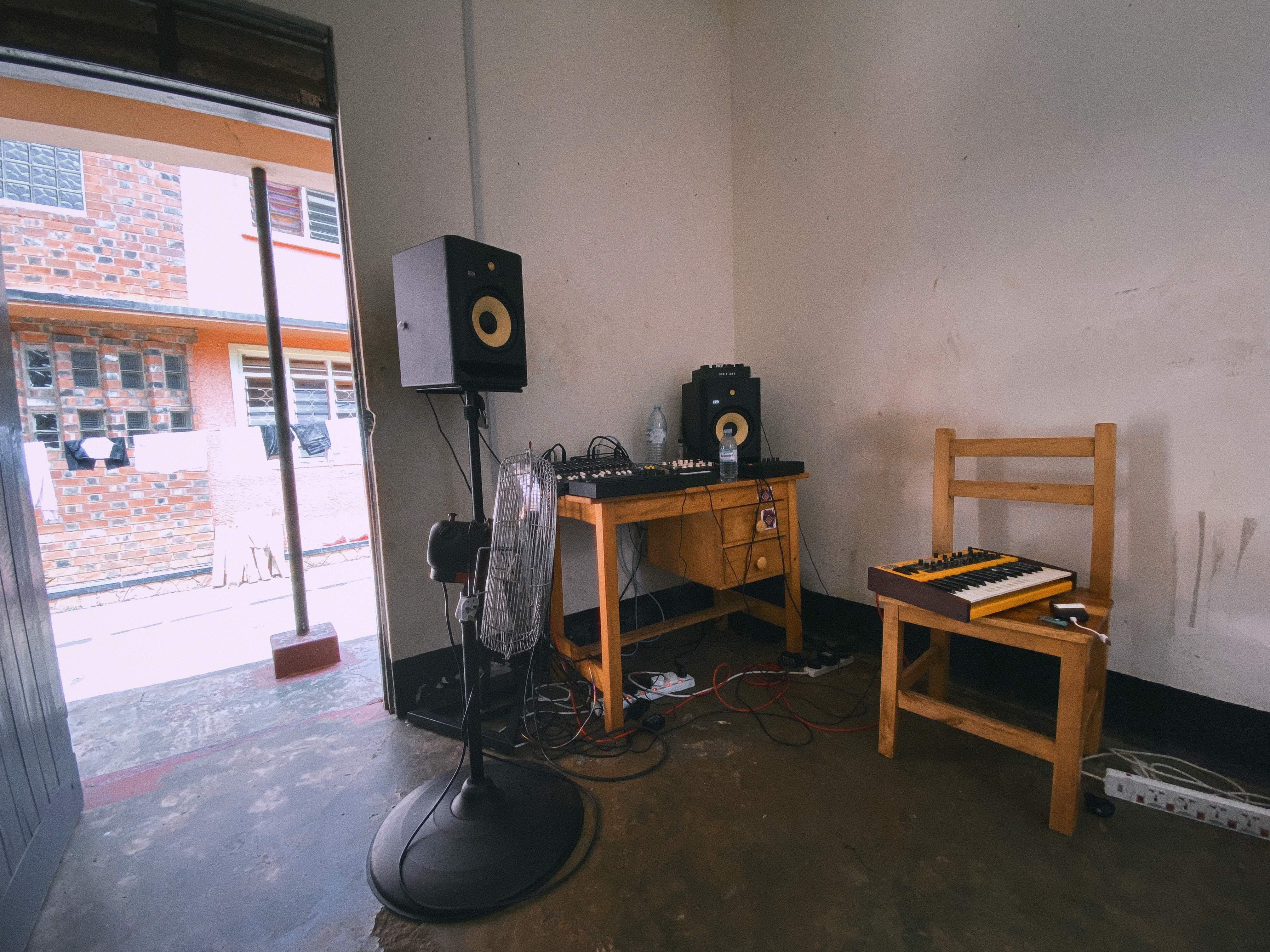

Inside the pink concrete walls is a series of bedrooms, studios, workspaces and living quarters.
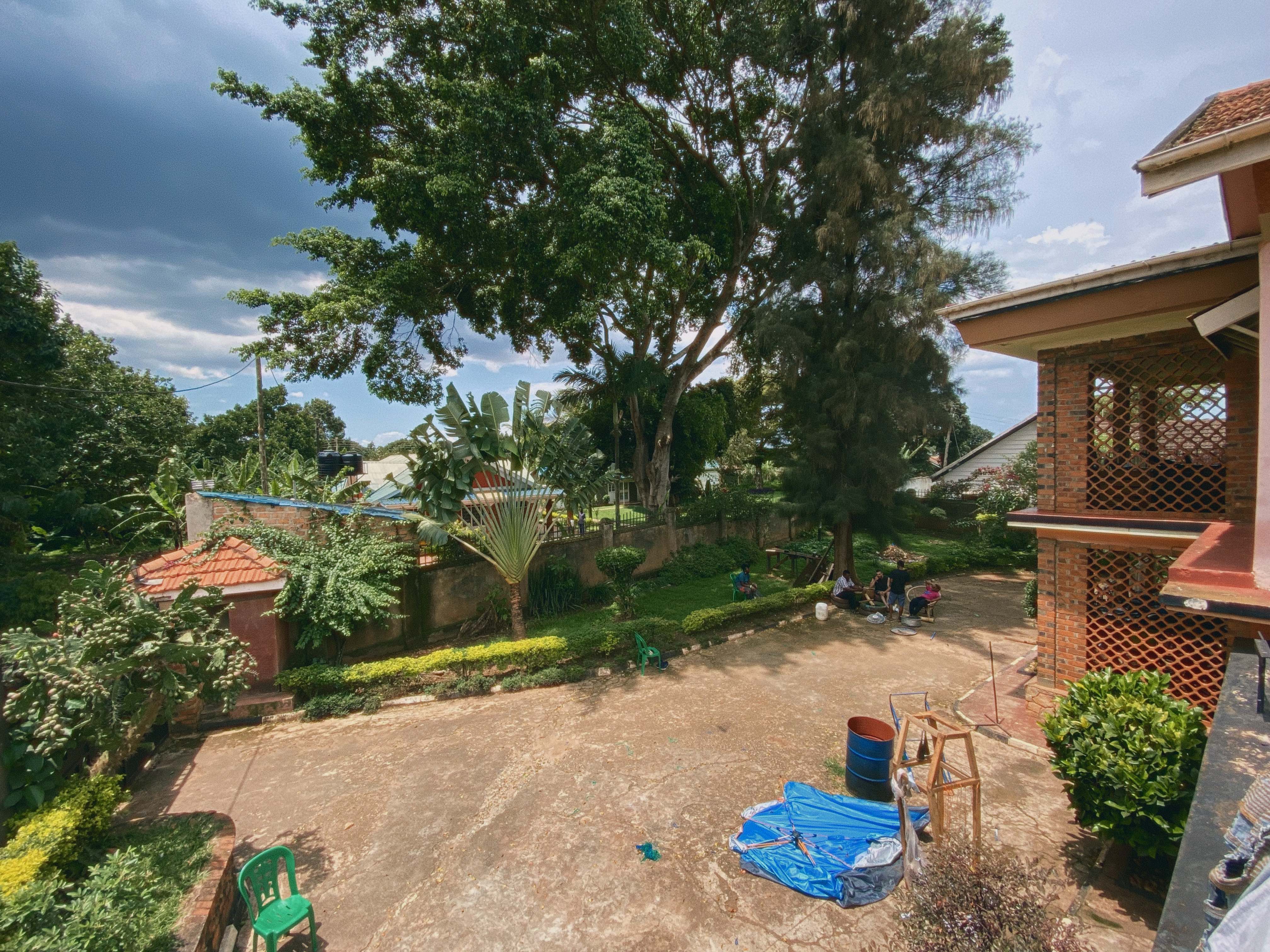
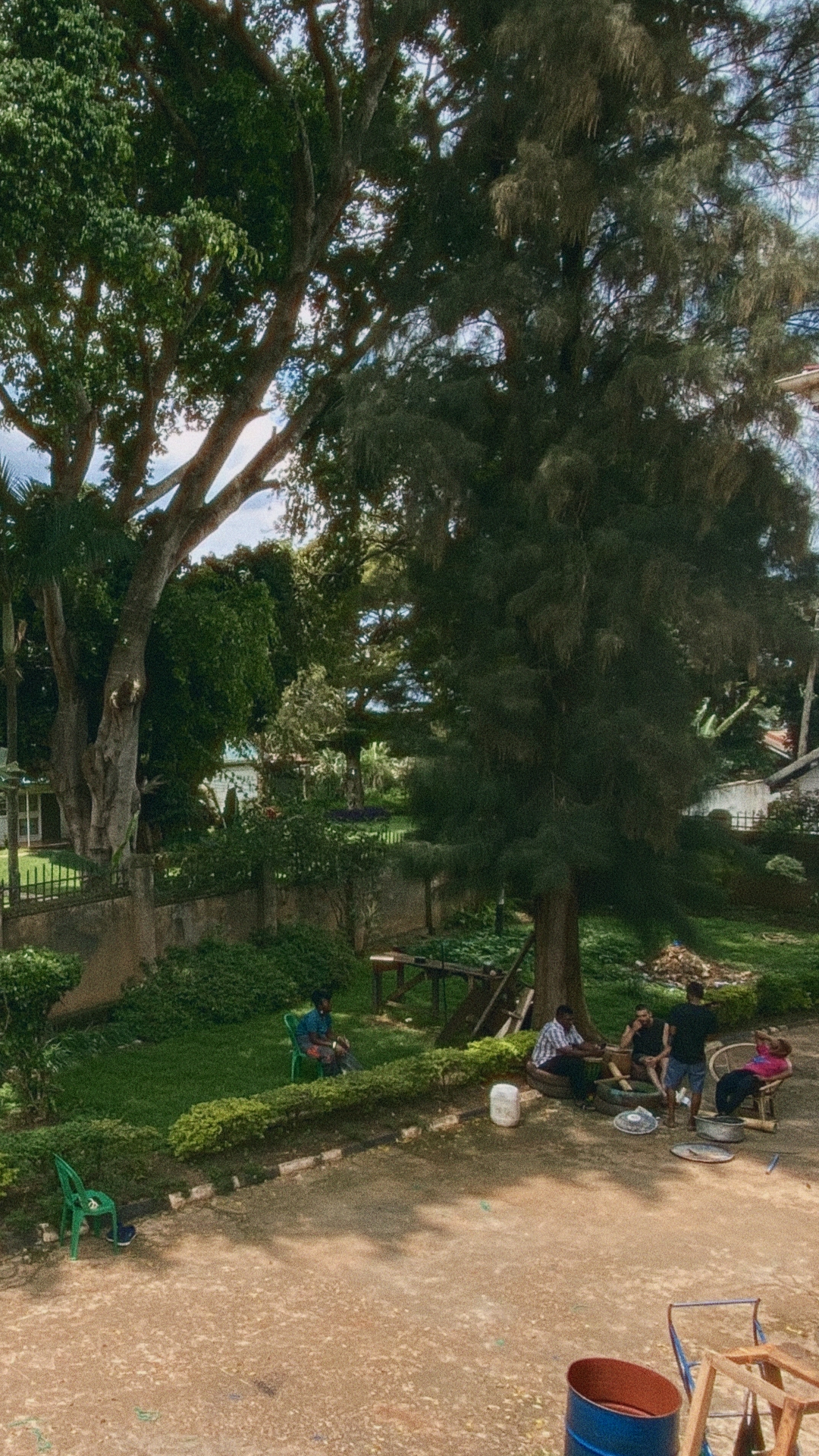
A mix of language and habits flow in and around, often finishing with a nighttime drum circle or respite beneath a ficus tree.
For summer 2022 this is Phase 1’s home base. It’s where artists will spend weeks munching on their creative vision. Projects take their initial shape, all awaiting the explosion of beauty and chaos which would come to be the Nyege Nyege Festival at Itanda Falls. “It’s pretty intense work, but it’s enriching,” explains Pauline Bédarida aka PÖ, a French-Ghanian artist and DJ, longtime Nyege Nyege collaborator, and Afropollination Swiss army knife. “Seeing everyone together here in this place… it’s like family.”
Aboard the Stubnitz
On the other side of the world, sitting along the Elbe river in Hamburg, is the Motorship Stubnitz; an 80 meter long former East German fishing vessel transformed in 1992 into a roving platform for cultural exchange. Weighing in at over two and half thousand tons, the Stubnitz travels from its homeport Rostock around the Baltic and North Sea to cities like Amsterdam, Copenhagen, Newcastle, Hamburg, St. Petersburg, and London.
Above deck one looks out at the industrial outskirts of South Hamburg.
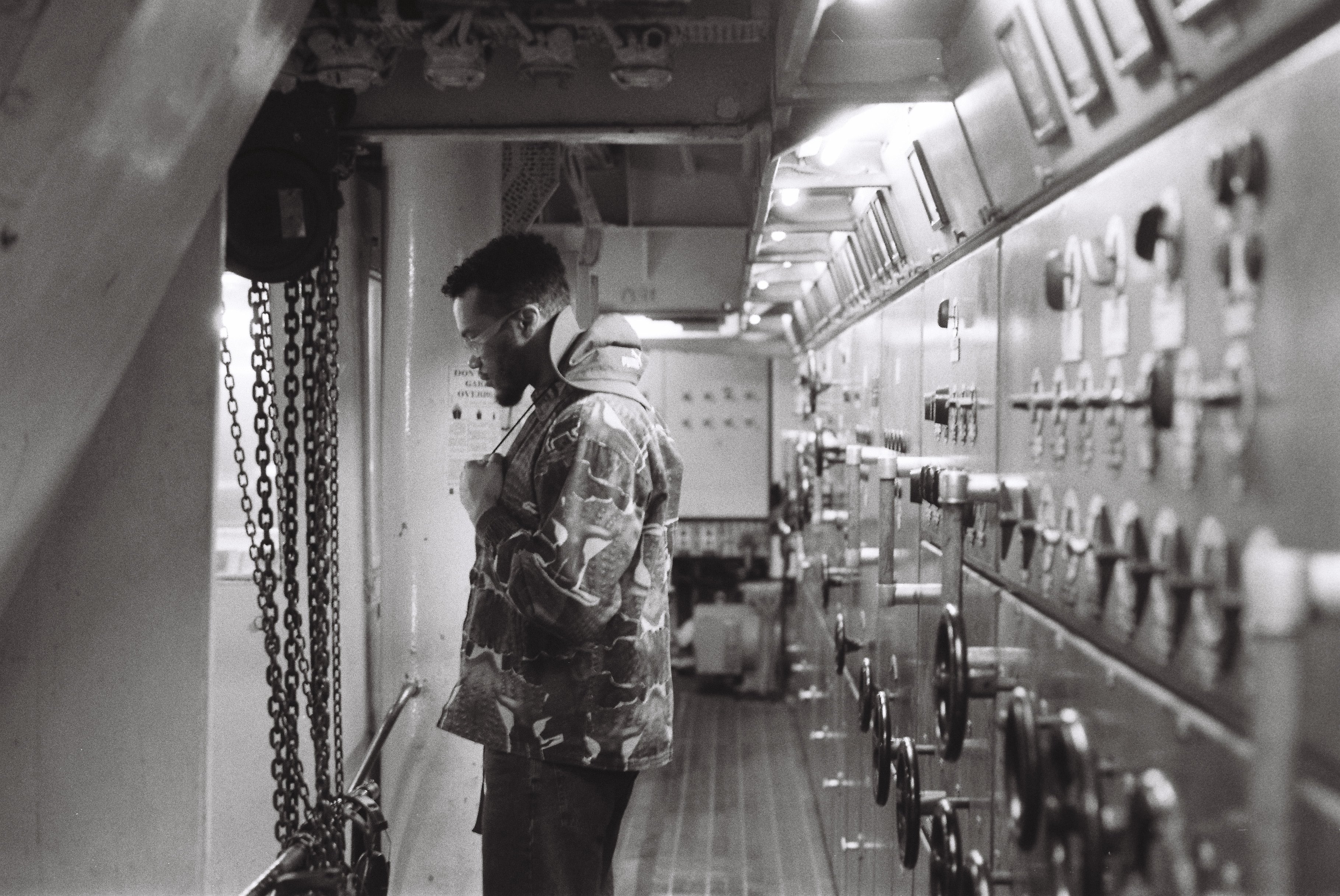

Inside, rack and pinion doors seal the noise, taking residents out of time.
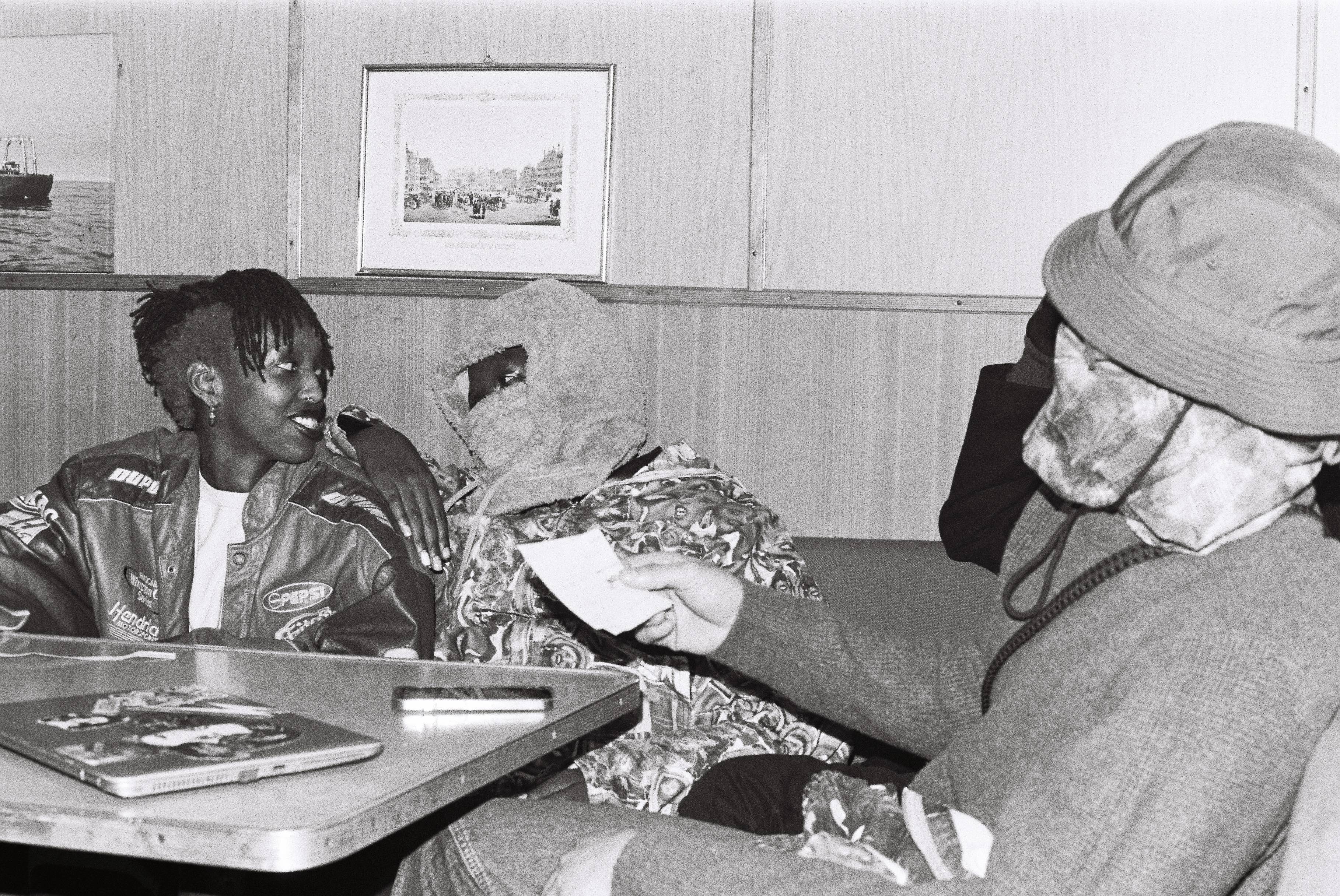
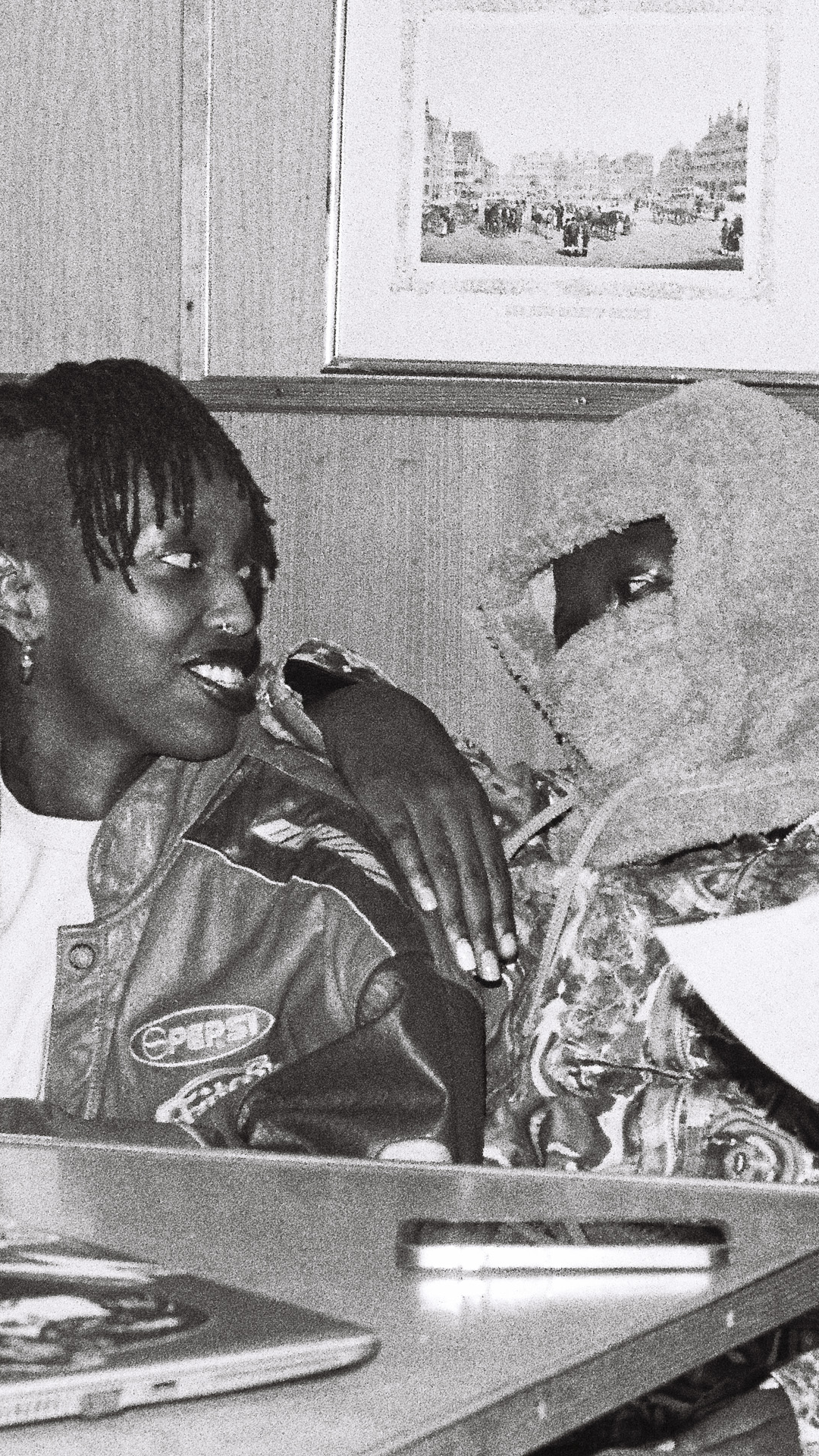
Rising from the water on four levels, the boat has plenty of space for work and living quarters, where residents can record a track or share a meal.
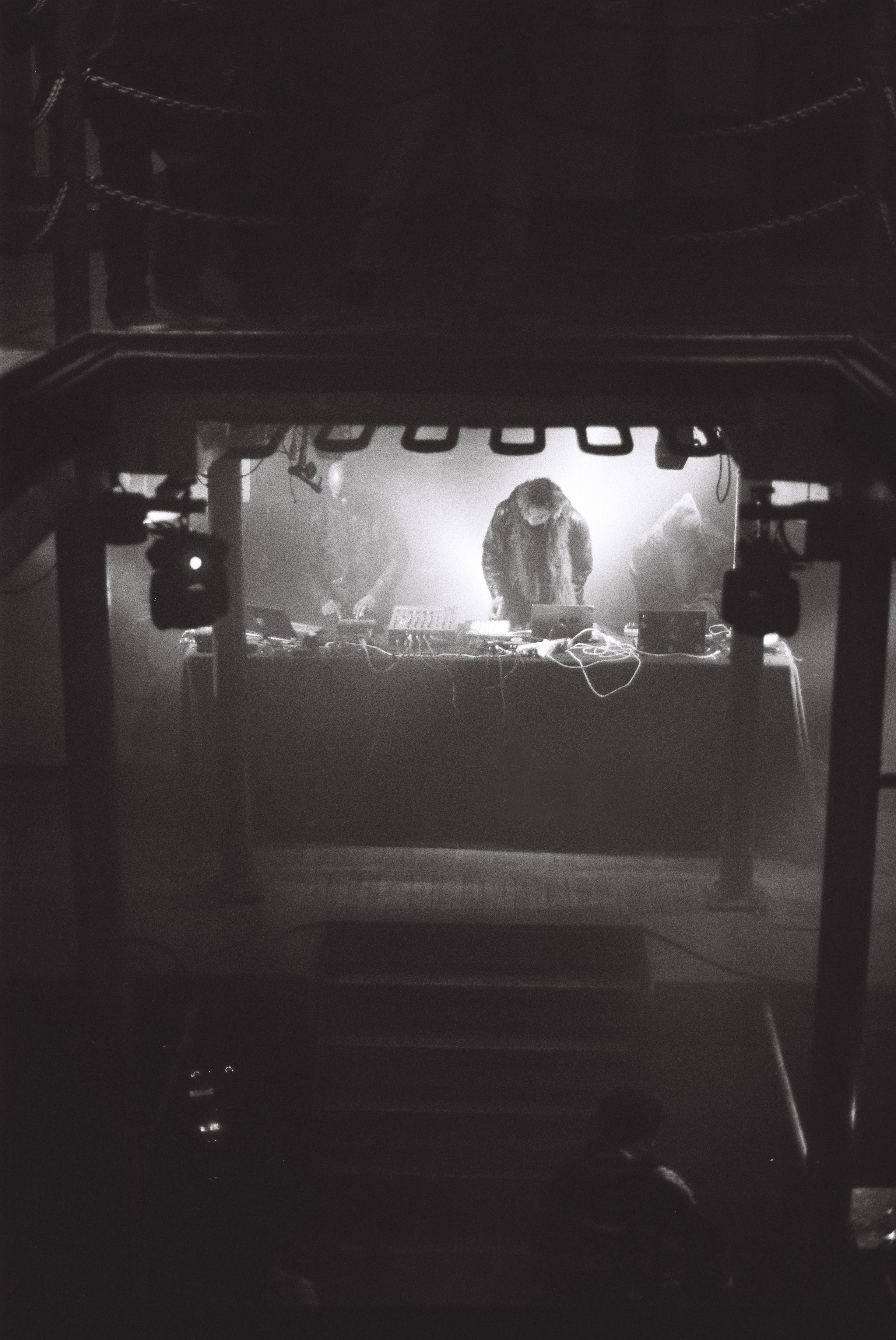

In the middle, a massive room formerly used to store fish during long voyages out at sea, is now used for concerts and events.
Elsewhere, between the cooling pipes and control valves, one can find rehearsal rooms and collaborative spaces. Stubnitz volunteers maintain production studios and practice venues, and a chef prepares meals at all hours of the day and night. Squeezed away in these odd shapes is where Phase 2 of the residency takes place, ideas more masticated, dates in Berlin approaching, and a sense of residence fully in place. Between frigid cold and tropical heat, the scene is set, camp is made. Now comes the good work of creation.
Time to pollinate
In these strange and beautiful spaces the artists are brought together. But working across disciplines, cultural barriers, and often language, is no easy feat. It takes a sense of trust, patience and conviction in the benefit of collaboration. For this group, living in close proximity, expressing and experiencing each other’s work first hand, the foundation was laid for a deep integration of creative hearts and minds. But challenges remain. Knowledge is bound. And it takes the nitty-gritty path of daily effort to traverse those lumps in the road.
For some the process is natural. Franco-Malian, Berlin-based artist Astan Ka paired with Rwandan multi-disciplinary artist Binghi during the Afropollination program. Both have an Afrofuturist vision colored to their own experience. On stage, the two performed at both Nyege Nyege (with the help of Thelma Ndebele aka Dormant Youth) in Uganda and aboard the Stubnitz. The vocal universe of Astan Ka and the thumping space of Binghi’s productions create an expansive world.
Astan Ka is a member of Berlin’s Sonic Interventions collective and a creative visionary for “gangsta jazz”, a genre coined by Astan herself. When not performing for the band Asphalt Djelis, Astan is self-releasing work like her single “Charcoal”, rapping and singing in both French and English.
Binghi is also a multi-talent. A self taught music producer exploring spiritual drum patterns, a DJ, and a visual artist, there’s a vast creative well for her to tap into. Binghi also starred in the cult film Neptune Frost, under her real name, Cheryl Isheja, which premiered at the Cannes Film Festival and looks like much of Binghi’s music might sound.
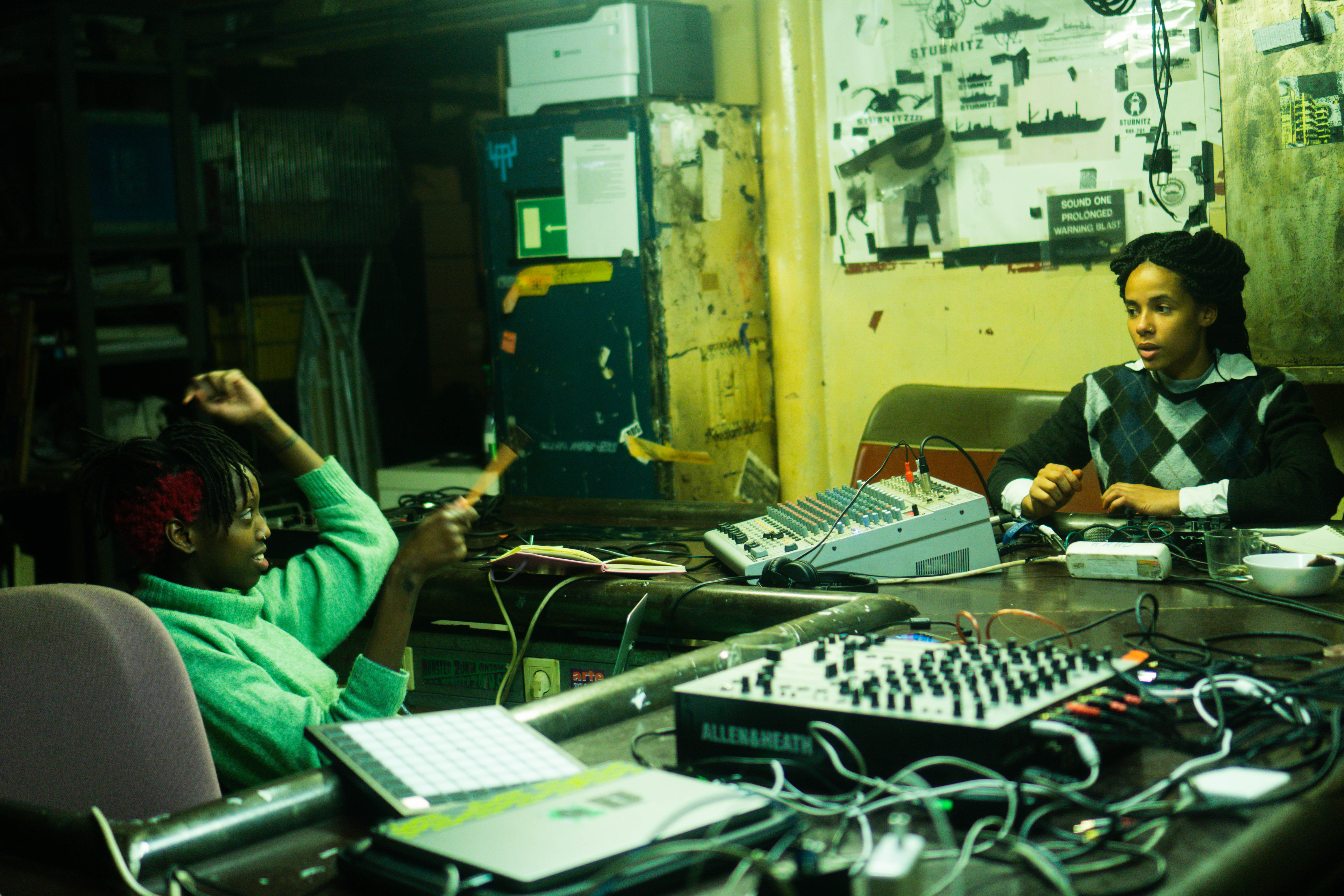
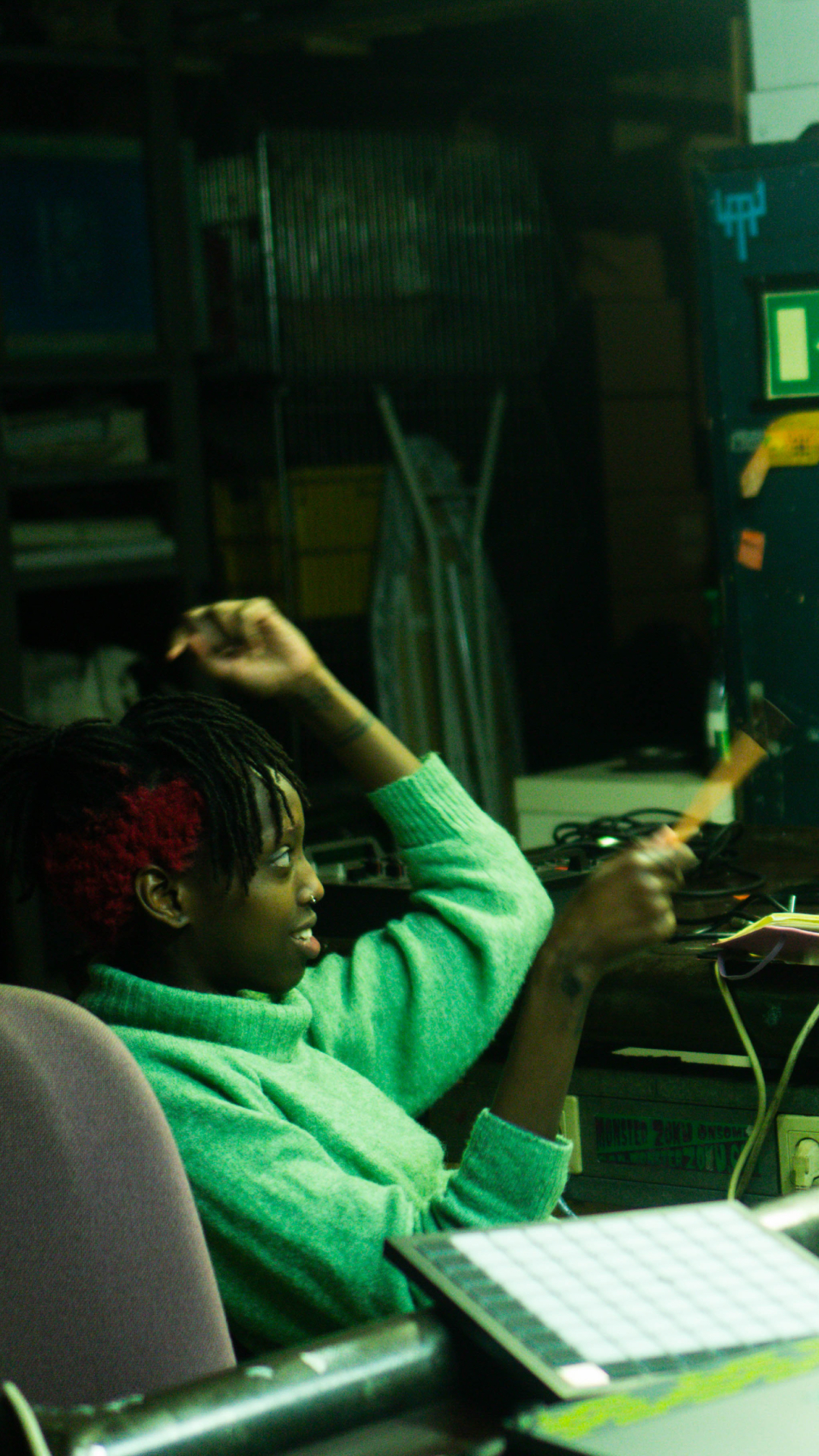
“We don’t need to think too much about what we’re gonna do. It’s a pure experience. I wanna see where it takes us. I wanna feel the bass from the floor.” – Binghi
More than collaborators, the two became friends. Working in lockstep with joy and passion. During their time, the two produced and released a single entitled “Sacred Forest”, notions of the natural and sacred essential in both artist’s creative vocabulary. The duo is an example of when residencies flow like water through existing inlets.
Leaving the comfort zone
But convergence isn’t always guaranteed. Sometimes one needs to carve the earth, and build a canal. For the residency duo of Afrorack, real name Bryan Bayana, and Jessica Ekomane, there was a greater chasm to cross.
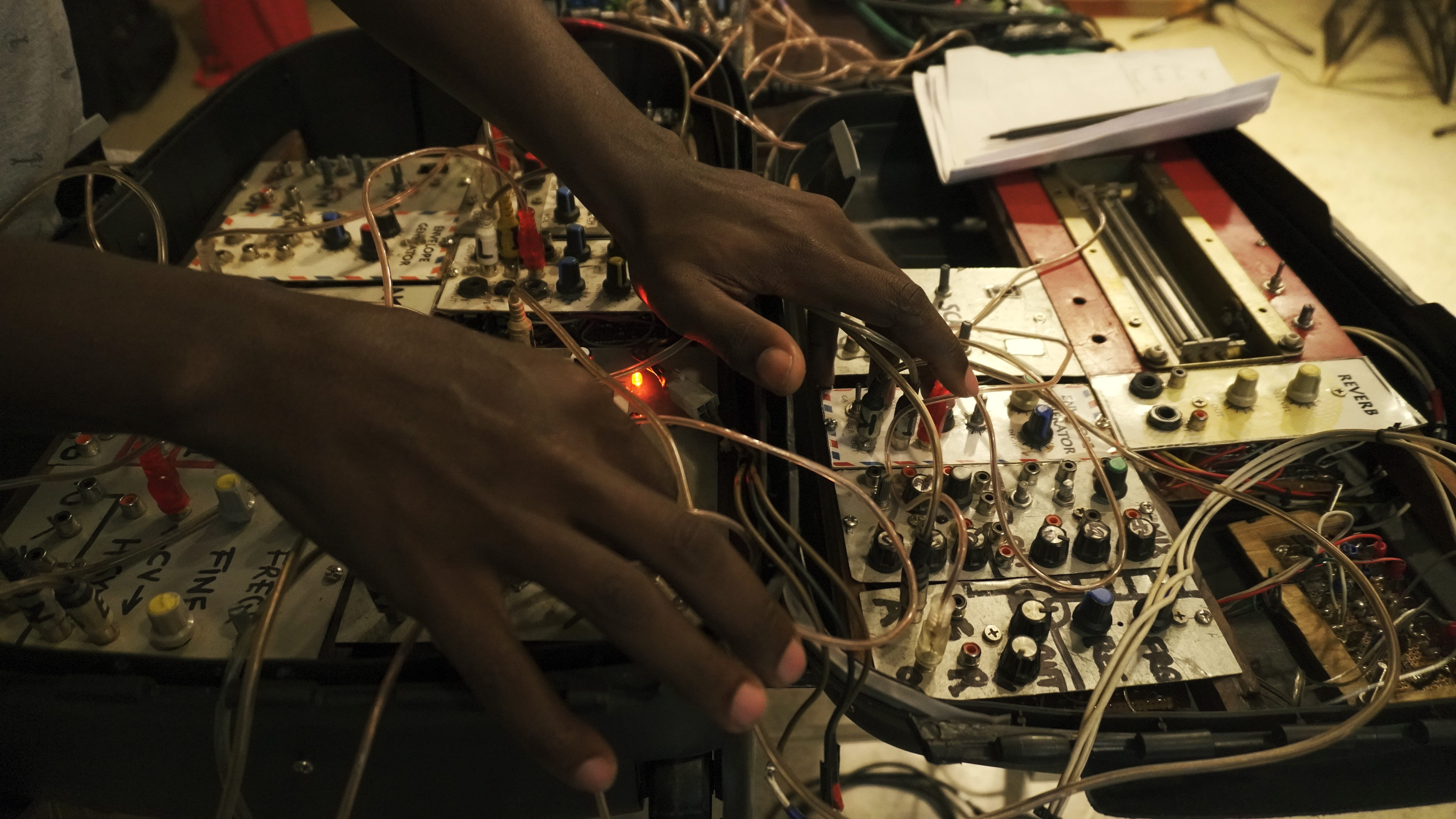
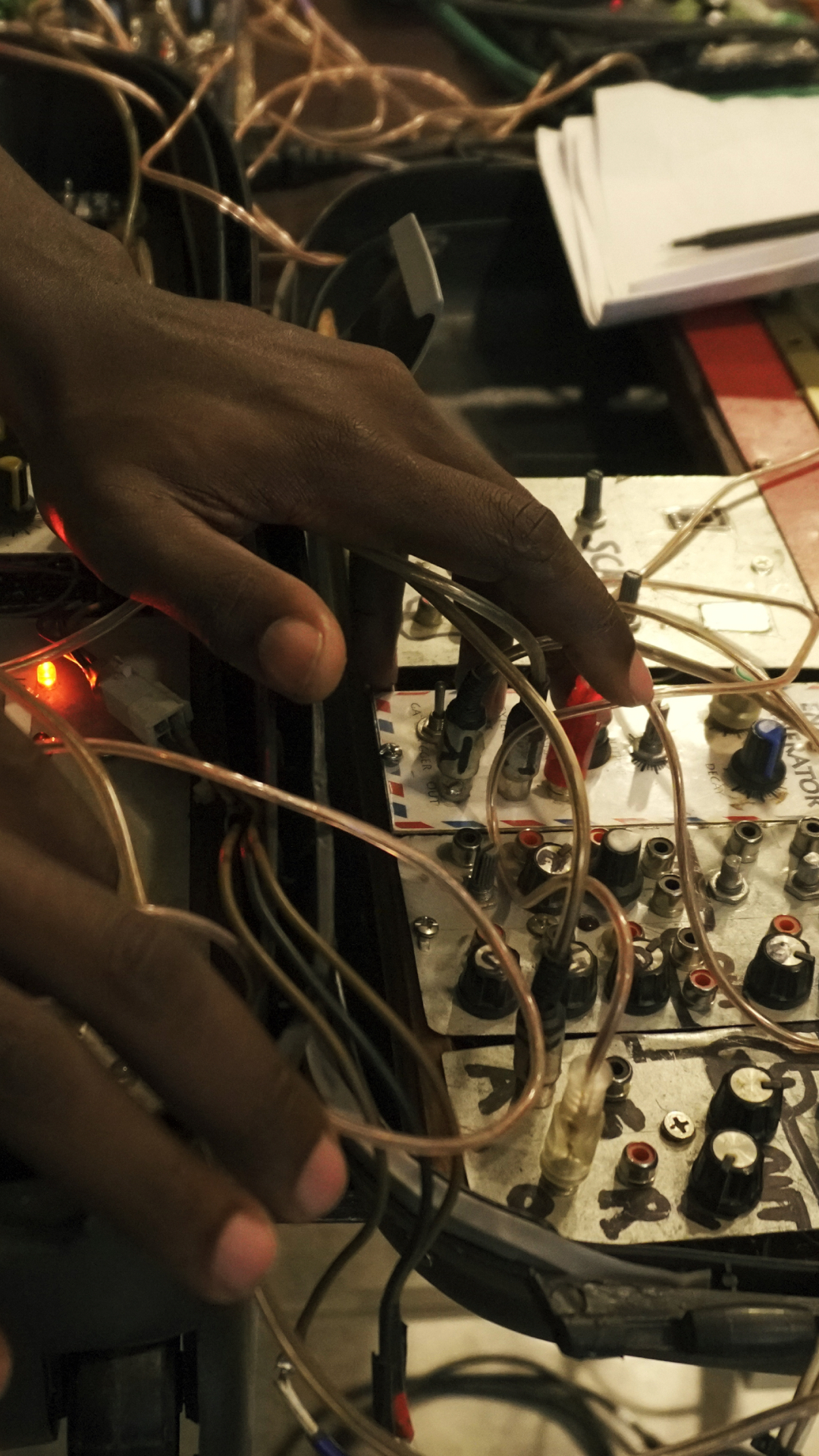
Afrorack is a maverick. A Ugandan native, he built one of Africa’s first DIY modular synthesizers.
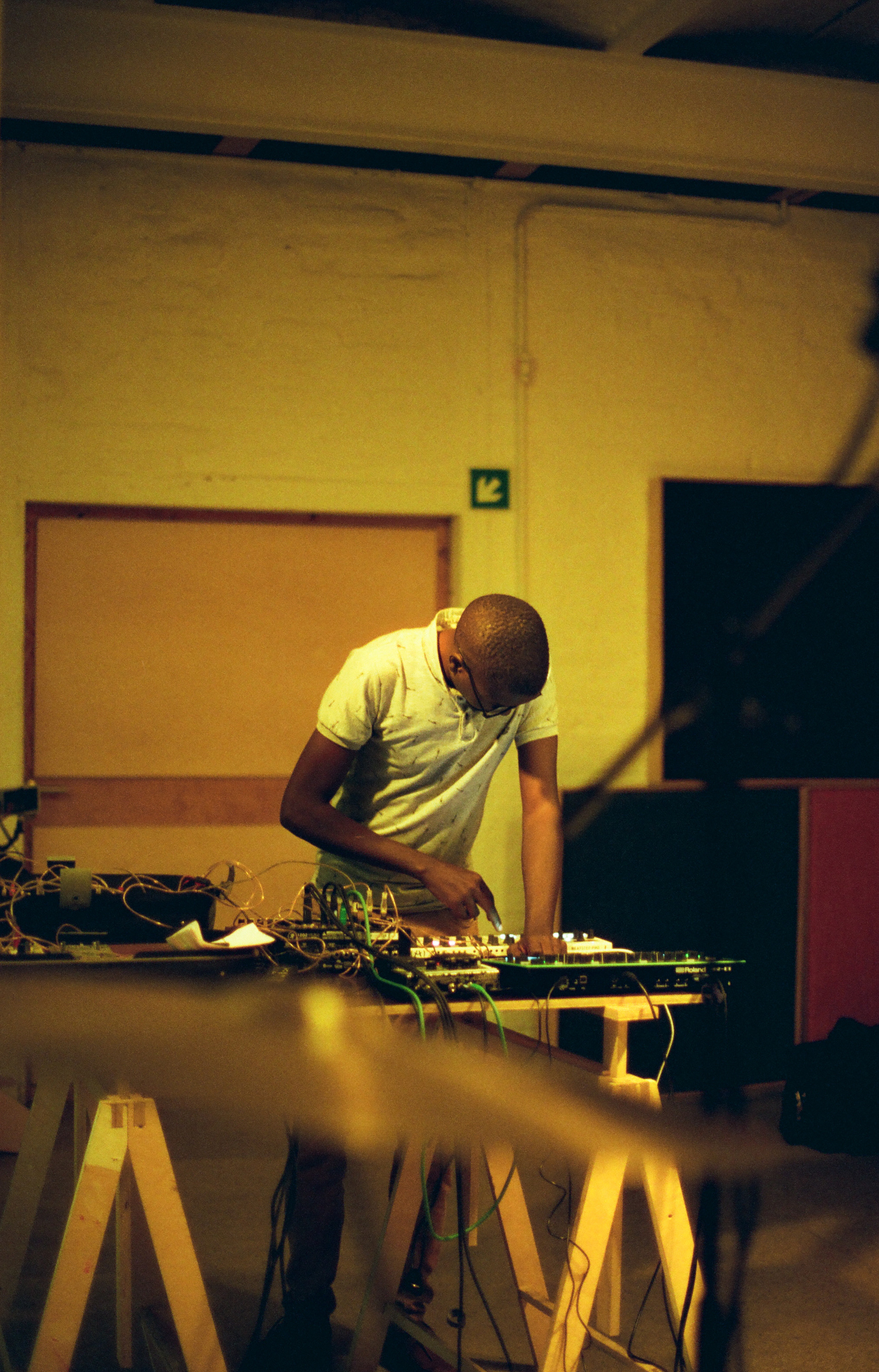

Born of a personal curiosity, Afrorack would forage around repair shops, compile tutorials, and read circuit diagrams on the the internet in order to build his musical machines.
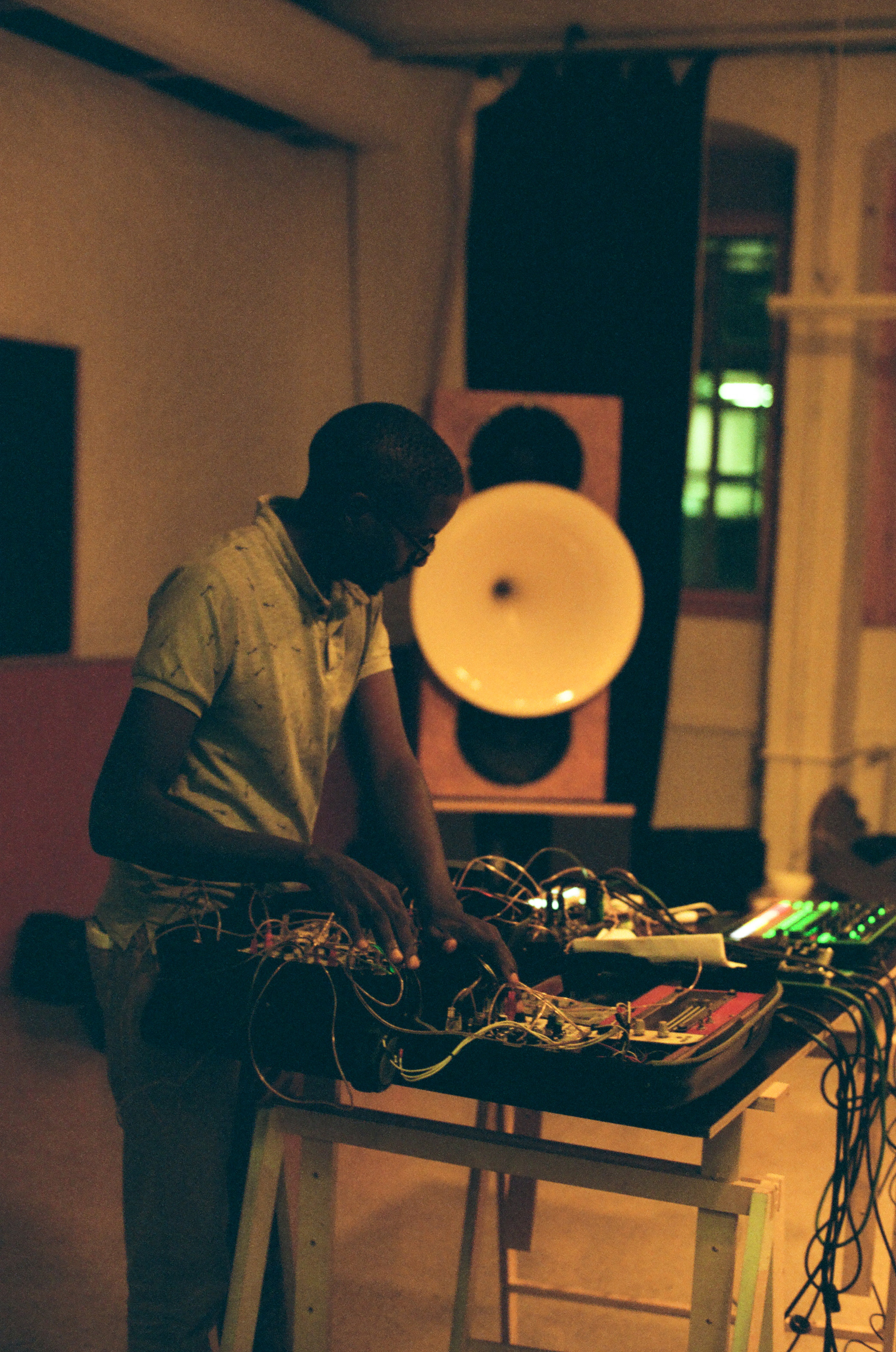

The result is a singular form of “African acid-house” using the electronic sounds of the synths and the complex rhythms of his native Uganda.
On the other hand is Jessica Ekomane. Jessica is a French-Cameroonian, Berlin-based electronic musician and sound artist. Interested in mathematics, physics, and the nonlinear passage of time, Jessica’s performances and productions are ambient and cathartic. Each composition contains numerous sound events that are different from each other, passing seamlessly or abruptly between textures.
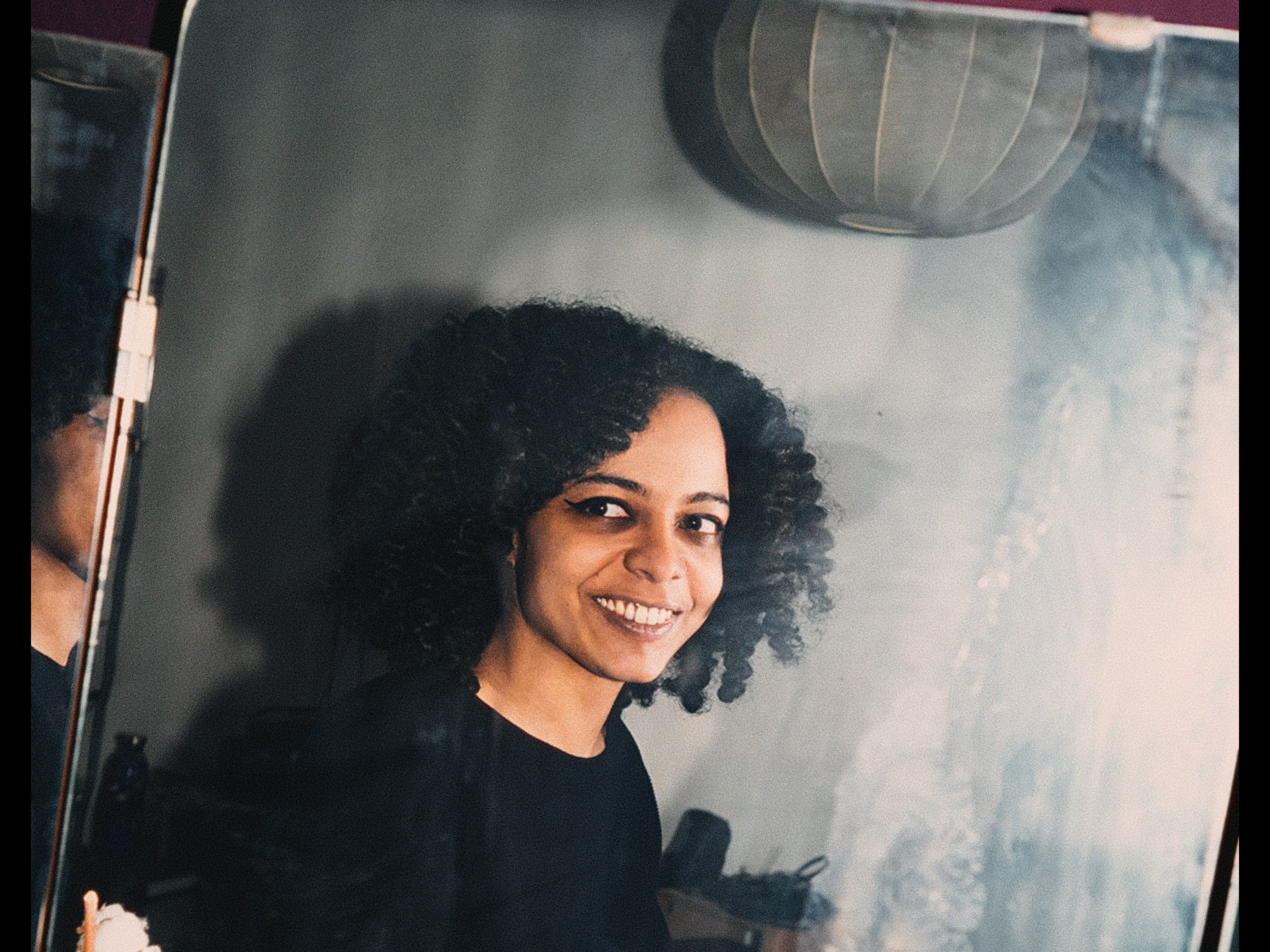
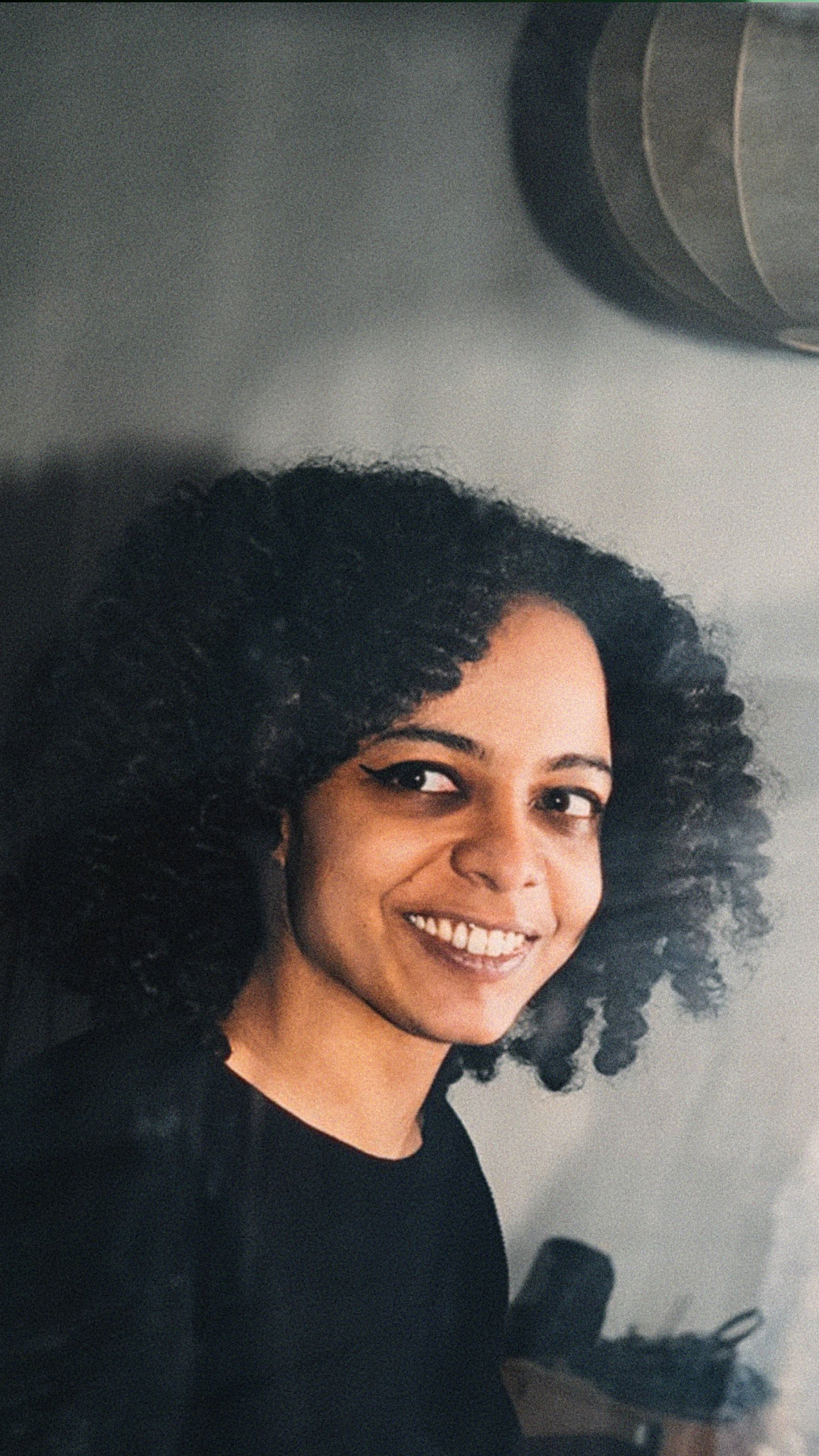
“One thing we have in common is that we build things from scratch.” – Jessica Ekomane
Two singular artists, each with an imposing aesthetic and identity… the process of collaboration takes energy and compromise. Nonetheless the two managed to squeeze out something special. Over time, Afrorack’s heavily percussive style and Jessica’s “non-linear sound” found a way to match. The effort culminated in a CTM (a Berlin music and visual arts event) performance that was received with much acclaim. Perhaps it was the tedious standards of top-tier creatives that blocked a feeling of immediate success, but visuals shot by videographer Jan Moss and interpreted by dancer FannyLove in Uganda show the promise of the two’s offbeat momentum.
Mutant creations
For others the residency is a window into the unlikely engagements between far-off creatives. Take the trio of DJ Diaki, Zoë Mc Pherson, and Jay Mitta. One, a balani innovator, the other, a Berlin techno maverick, and the third Tanzanian singeli music pioneer. If there’s anything these artists have in common it’s the relentless pulsating rhythm of dance. And speed. Lots of speed.
The synthesized balafon music that DJ Diaki helped make famous from his Malian home country is high energy madness. Emerging in the late 90s in and around the capital city of Bamako, Diaki and his contemporaries were able to recreate troupes of 10-12 musicians on touch pads, synths and DAWs (Digital Audio Workstations). The result is a gritty electronic version of this trance inducing dance music that plays with the traditional balafon as well as elements of kuduro and coupé-decalé.
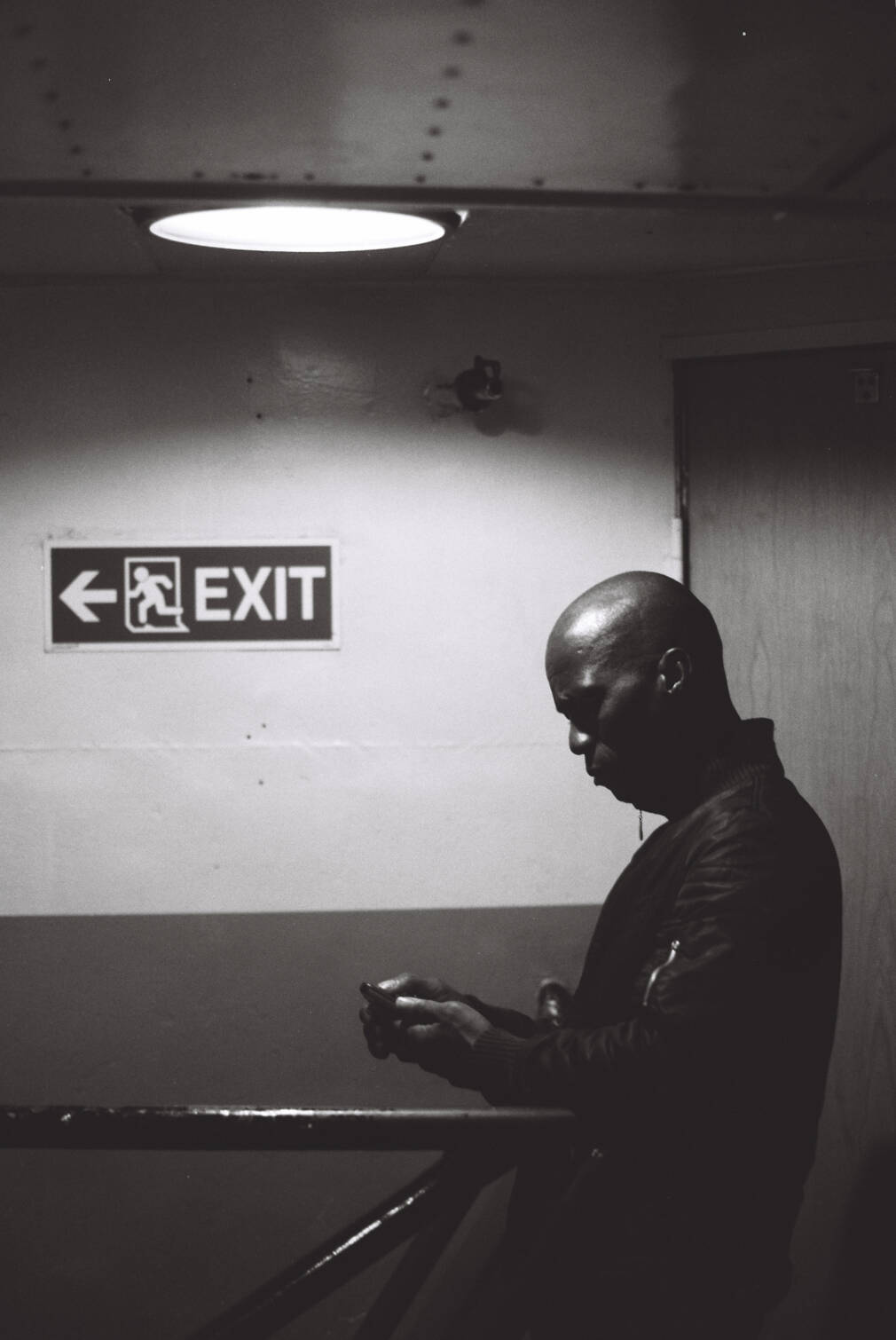
Far to the South East is singeli music, a modern ancestor of taarab that’s sped up, full of bass, and with tons of quirky electronic accents. Jay Mitta, who came up in Sisso Studios, one of the legendary singeli workshops tied to Nyege Nyege, is carrying the torch for the endless rhythms and performative displays of this emergent sensation. Classics like Mitta’s 2018 Tatizo Pesa have become part of a soundtrack to the youth-led, block party-style movement that singeli embodies.
Slap it together with the complex textures of French-Irish, Berlin-based spatial sound shaper Zoë Mc Pherson and her tastemaker techno and you have a mutant creation of explosive sound.
“We send heavy stuff individually, but we’re still listening to each other. That’s what’s beautiful.” – Zoe McPherson
If you’re into pyrotechnics and polyrhythms this amalgamation is an obvious intrigue. Those braced and brave can roll into the chaos with a psychedelic appreciation. The artists themselves certainly didn’t come out unscathed by the maddening power of each’s sound.
Techno-balani? Future singeli? The volcanic features of triple influence are yet to be determined. But whether it’s a synthesis of Afro-futurist visions, theoretic conflict between sound scientists, or collabs between mind bending super-troupes, the sum is a work of art, a statue of parts.
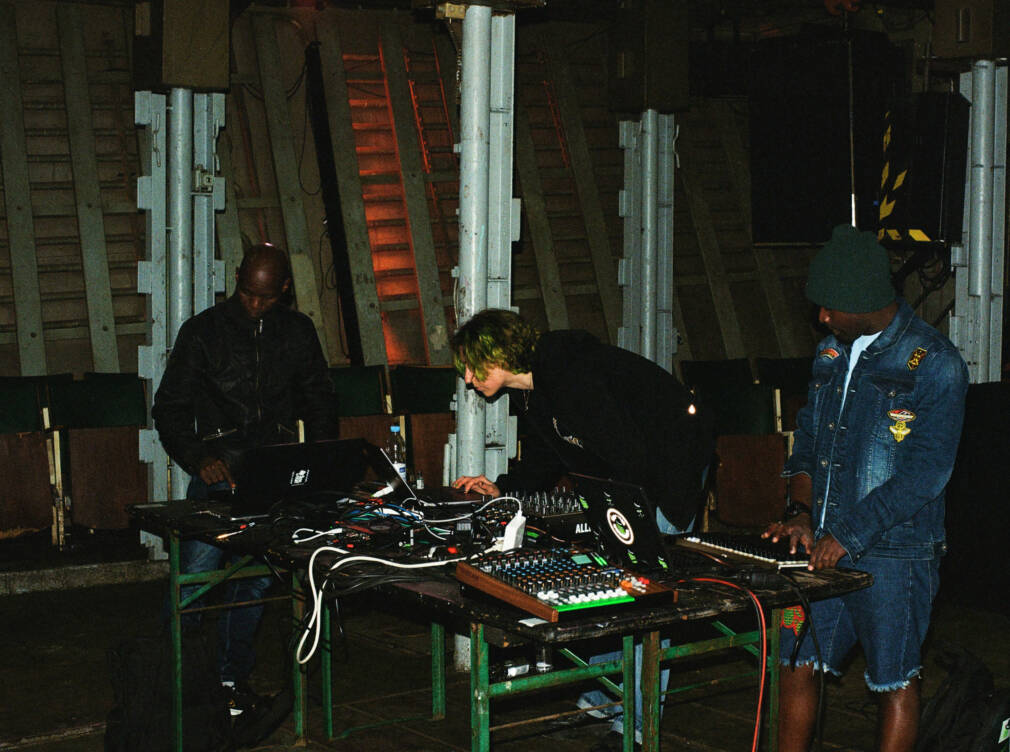
Supergroup 3OK (Dj Diaka, Zoe McPherson, and Jay Mitta) practice before a show
Letting things bloom
Collaboration isn’t just throwing things against a wall to see what sticks. There must be a deliberate approach to sharing knowledge. Which isn’t always symbiotic. At times, information must be explicit, didactic and pedagogical. Assumptions must be exorcized and artists need to become teachers of their craft, culture, and vision. While in Germany, Afropollination in collaboration with other festival partners, organized a series of workshops to allow artists to express their craft to other participants as well as the wider community.
Menzi, a pioneer of South Africa’s gqom music, hosted one such workshop at the CTM festival in Berlin, a meeting point for many international DJs and producers. A Durban native, Menzi has been on the forefront of South Africa’s deep and dark club music, gqom. It’s a sound that evokes maleficent spirits and the ominous supernatural. “Scary in an exciting way,” says Menzi to the workshop audience. Less understood and less trendy than its jazzy, housey counterpart, amapiano, gqom has a unique power within its muffled howls and shattering bass to move global club audiences.

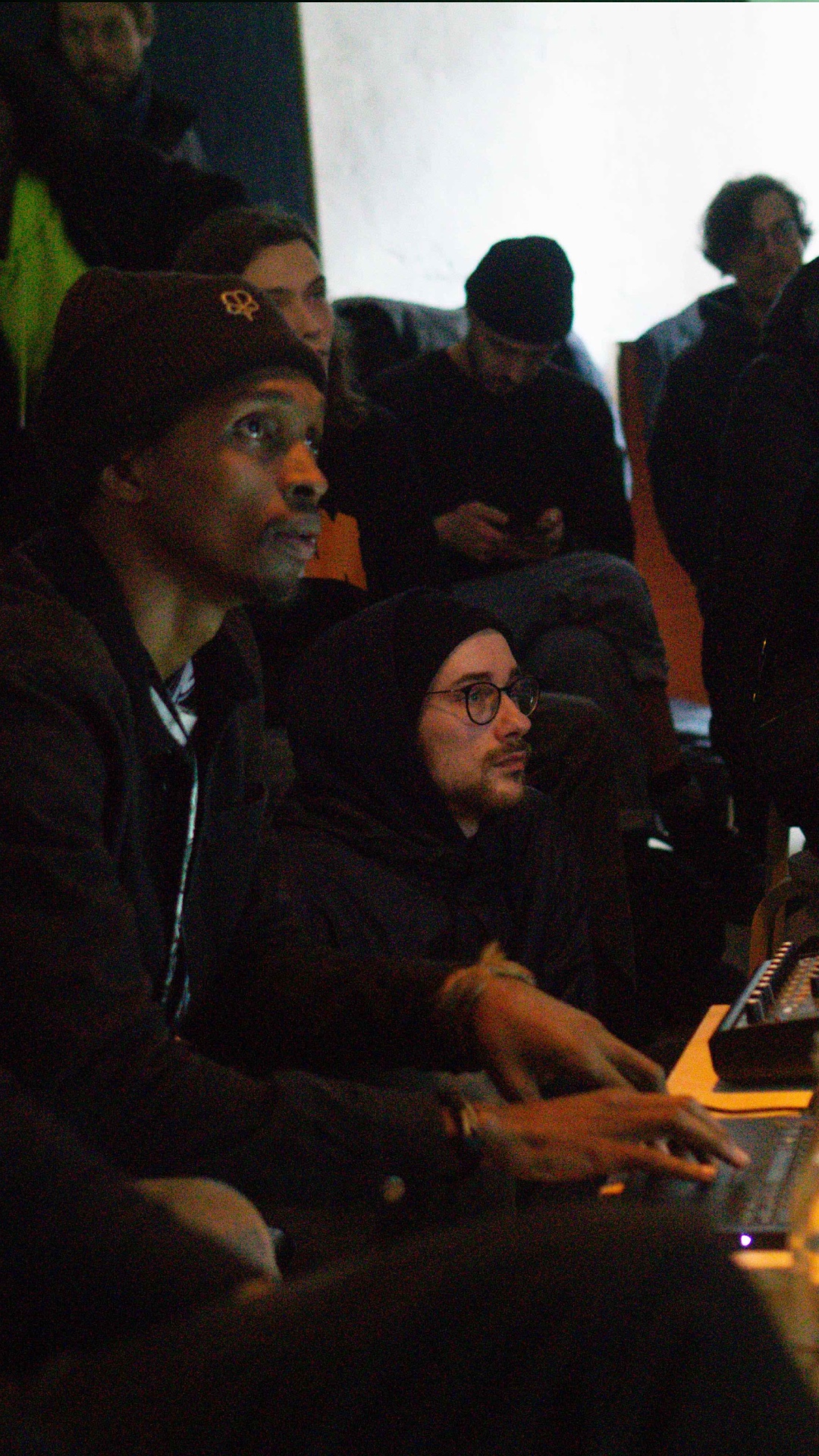
In Berlin, for the CTM festival, Menzi took the time to explain the origins of gqom and how he as a producer perceives its sound.


Hooking up his computer, Menzi projected the columns and rows of his workstation that make up the genre’s ingredients.
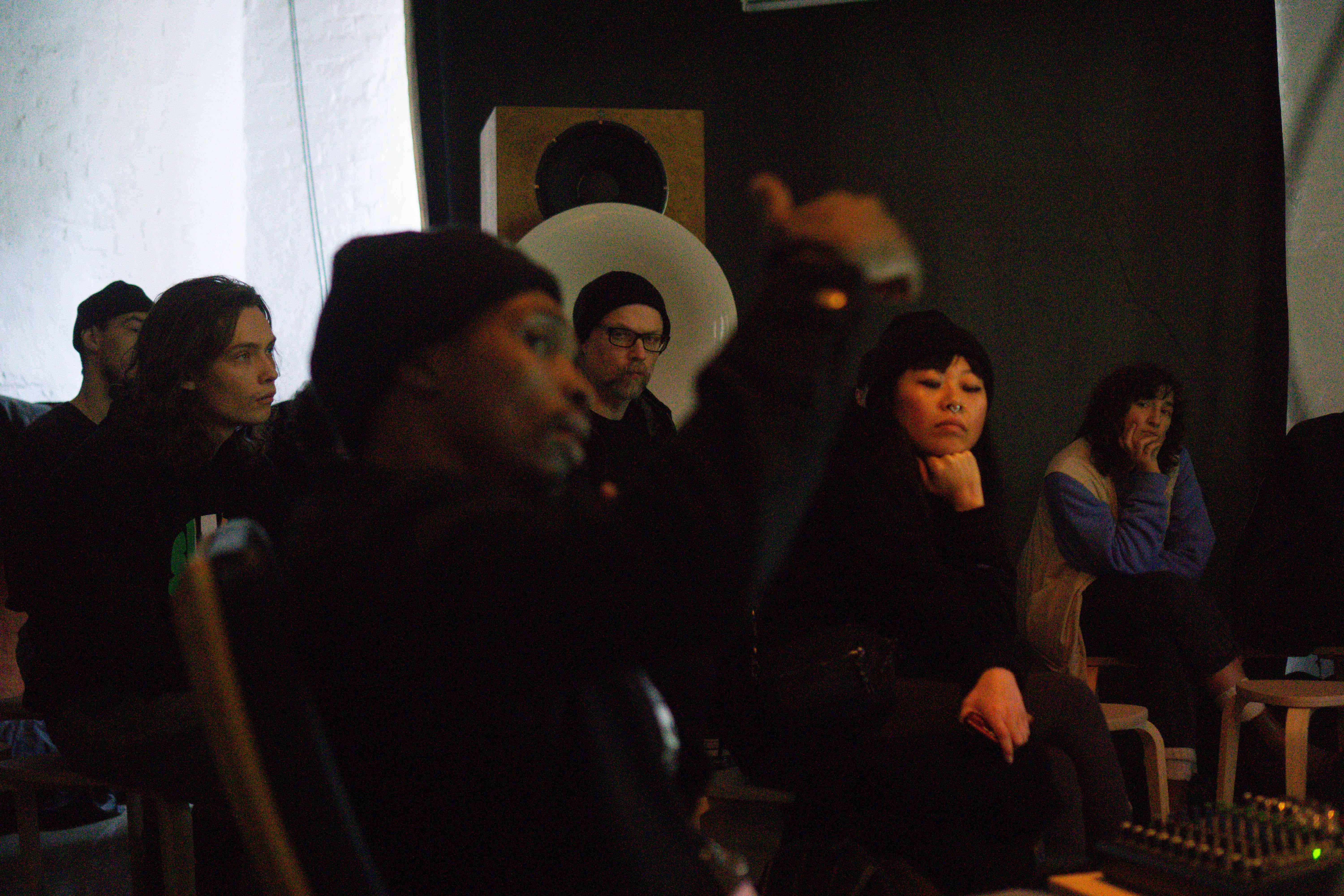
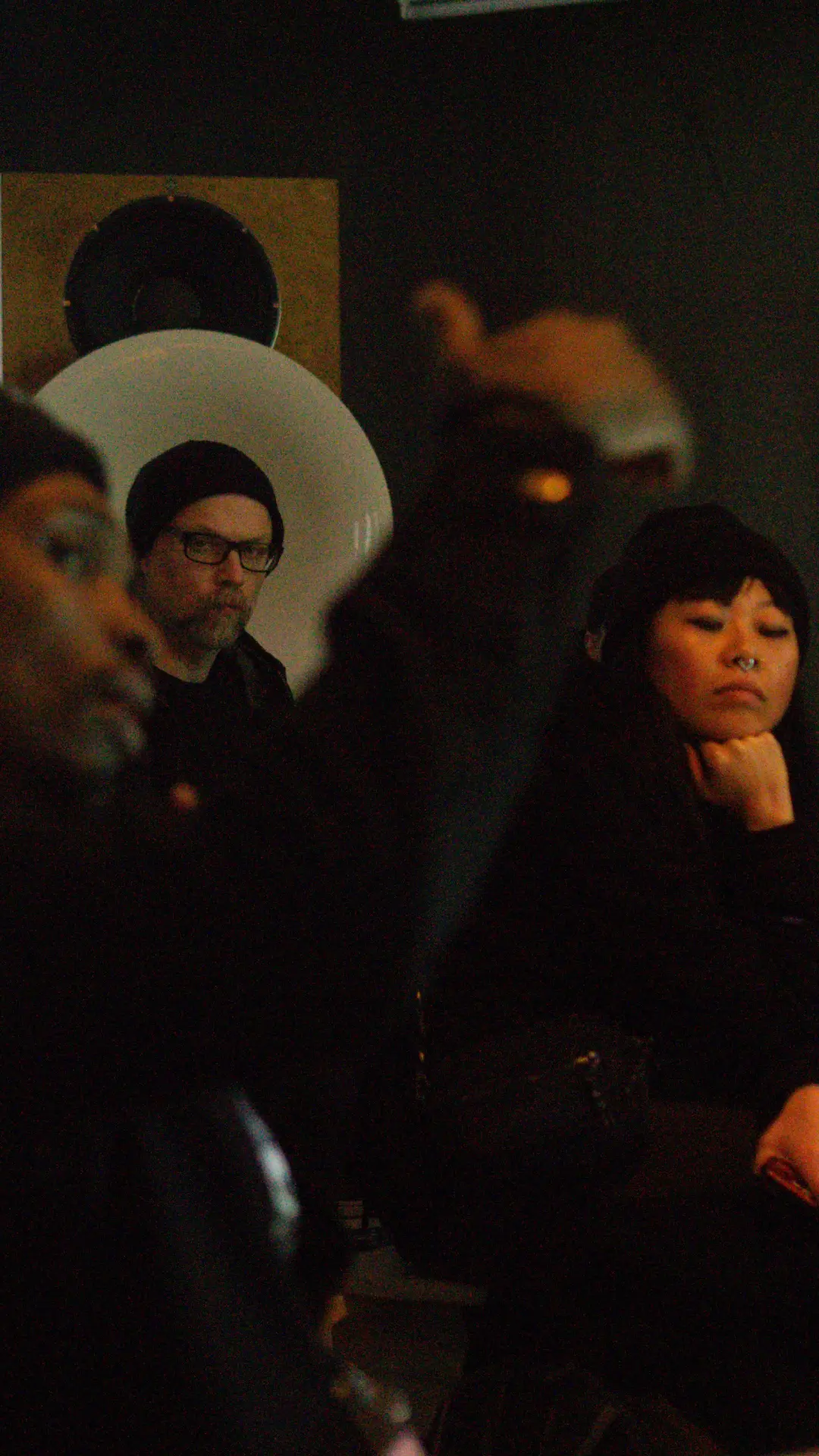
Running through its outsider origins on cracked fruity loops software, it was a chance for the curious few to decrypt this darkside music.
For the Afropollination experience, Menzi was paired with Berlin-based, French producer Debmaster. A prolific artist and producer for some of the most charismatic artists on the Nyege Nyege roster including MC Yallah and Aunty Rayzor, Debmaster has an experimental approach to hip-hop, 8bit, glitch music, among other left-field sounds.
Knowledge, in all its bits and pieces, was exchanged between the two producers. In its revelation a common thread is found. Often more in a feeling than the mechanics of things. Then, it’s on to the good work of reverse engineering mouse movements across digital workstations to uncover a universal zeitgeist. “I think we’ve created a whole new genre,” Debmaster laughs in the phosphorescent lights of the Stubnitz.
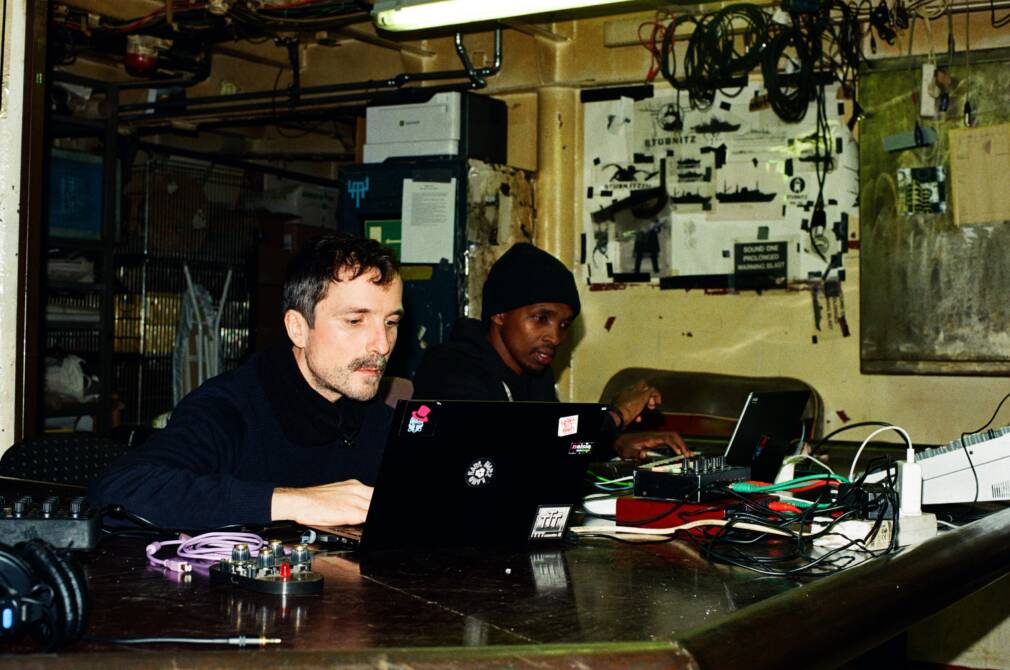
Deconstructing singeli
From Dar es Salaam, it was Jay Mitta who hosted a workshop of his own to present the aforementioned singeli music. With the help of Nyege Nyege and the prowess of some of its pioneers, including DJ Sisso, and the new school of talent like Maiko, singeli is making waves internationally. Sisso’s Sound of Sisso is an international cult classic, with LPs sold out on tastemaker platforms like NTS Radio. Jay Mitta was also one of the first singeli artists to tour around the world.
The joyful melodies and lightning fast beats are dance music at its finest. Upon first listen it’s not the easiest genre to warm up to. Certainly not without the contagious spirit of singeli performers. Focused as much on the experience as the mechanics, singeli is a music often mixed live with drum samples programmed on computer keyboards via the free interface of Virtual DJ. This allows singeli DJs and producers to mix endless tracks with dynamic rhythms, continuing on far into the day and night.
Sisso and Maiko have taken this approach to the next level, often playing the keyboard behind their heads, with their tongue, or blindfolded as they did during the Nyege Nyege Festival Paris and recent Boiler Room. A performance they honed during the many weeks of their Afropollination residency. For them, sharing singeli behind the scenes is important. But it’s what’s front and center that the duo opt to highlight. The dancing, the energy, the moments of live performance strike at the heart of what singeli has to offer. Which brings us to the inseparable element for both the residency and music at large… dance.
Making moves
For the residency organizers, interdisciplinary exchange was as important as international exchange. Whether it’s the disciplines within music (producing, DJing, playing, composing) or in broader culture, it’s easy to silo craft into their respective towers of ivory and insight.
But the obvious remains. Music and dance are inseparable. One informs the other. Back and forth in conversation, bodies move to beats and beats move to bodies. For this Afropollination residency, dance was a crucial component to enriching the cross-pollination. For spectators and participants alike, dance embodied the experience. Often characterized as a “performance”, dance transcended the artistic frontiers of the festivals and residency locations to engage with the larger public.
“The idea is to do as many things as possible, but with joy and everyone in their place.” – Violaine Le Fur
Under the creative direction of Violaine Le Fur, groups were put together, workshops and movement sessions organized, and spectacular avant-garde performances shared with the world. Creative director of the Yoké collective, Violaine works across Africa doing workshops, exhibitions, and cultural events. As a curator within the Nyege Nyege collective, Violaine also participates in the dance and performance programming of the festival and encourages collaborations with other independent African Festivals and collectives such as Kinact (DRC), Modaperf (Cameroon) and Balabal’art (Congo Brazzaville).
One such dancer brought into the fold was Cameroonian multi-disciplinary artist Zora Snake.
During the Nyege Nyege festival, Zora chose to march his performance outside the gates and security controls of the festival as an offering to the locale.
Accompanied by the Royal Drummers of Burundi, Congolese dancer Sara Ndele, and the KinAct collective from Kinshasa, Zora’s ultra-futuristic, yet deeply symbolic spectacle was a display of generosity, transcendence, and pure avant-garde.
The recycled monsters who followed Zora are part of the Democratic Republic of Congo’s KinAct collective and festival organizers. Among them, Eddy Ekete, the group’s founder, takes trash from the over polluted streets of Kinshasa and transforms the material into works of art. Costumes made of plastic bottles, old car parts, or shards of glass. There is no limit to the recycled potential of their work.
It’s an appropriate metaphor tied to Zora Snake’s performance which “recycles” symbolism and tradition often cast aside or overlooked, creating modern reinterpretation in the form of ritualistic dance. “It was a way to give an offering to these families in the village and to bring peace,” Zora Snake says of his itinerant performance at Itanda Falls.
“The body is a magical place, it’s the architecture of life.” – Zora Snake
A similar performance took place with other dancers in Kampala’s Ggaba Fish Market near the Nyege Nyege villa. This makeshift dance outfit including Sara Ndele, Fanny Love, and Shanny J all made their way into the public to introduce the magic of their art to unsuspecting samaritans.
It’s a prestigious crew. Fanny Love is a Cameroonian dancer who has worked with international choreographers, won local dance battles, and became an Africa’s Got Talent finalist. Sara Ndele is a longtime KinAct collaborator and member of Kinshasa’s Academy of Fine Arts. And Shanny J is a renowned waacker, voguer and backup dancer for the likes of Meek Mill, Boity, or Kamo Mphela.
In the center of the Gbaga Market, Zora begins with another ritualistic offering. Sara sheds one of the KinAct costumes, reaching for the clouded sky. Fanny Love splashes in and out of an oil drum filled with water. Shanny J, moves in the shapes of a recovered tent and hula hoop leftover from the Nyege Nyege festival. Sisso and others bang on recovered sheet metal, makeshift drums, and wooden blocks to create a rhythm.
It’s a spectacular display. The shocked and amused faces of the children culminate in an overwhelming glee. A memory to last a lifetime and a spark of divine shot through the seams of waking life.
For the record
Unlike music, whose machines and studios provide the shape and constraints to an artist’s work, dance goes where the body goes. Formal recording is visual. And so, videographer and VJ designer Vincent Moon was invited to point a lens at the performances and give them material meaning.
Vincent Moon is a world renowned independent filmmaker from Paris. Known for his Petites Planètes collection that explores local folklores, sacred music, and religious rituals, Moon propels his camera into the moment, to be shared later for free on the internet under the Creative Commons license. An entire playlist of short films is available on YouTube, including the one below featuring FannyLove, South African DJ MP3, and South Sudanese DJ and producer Turkana.
One of the more gripping films was another performance at Kampala’s Gbaga Fish Market with French-Congolese, Berlin based no-limit fashion designer, embodied performer, and hybrid visual artist, Natisa Exocé Kasongo, or simply, Exocé. Alongside Exocé were Tanzanian singeli dancers Nana and Zai. A deadly twerk duo, Nana and Zai are Tanzanian queens of the dancefloor, mastering their bodies in rhythms that often roll at a minimum of 200 bpm.
The performance and accompanying film is fearless.
Stunned faces surround the trio.
Nana, Zai, and Exocé embody the terrifying and beautiful sounds of Chrisman’s doomsday track.
Dance became an expression of the residency’s music. But more than that, it became the bridge from the inside to the out. Working into the public, outside festival gates and in markets, it was a way for the artists to offer their creations back to the world. Pollination in action.
Letting things bloom
Though none of the work of Afropollination exists in a vacuum. The artist’s creations are meant to be shared, their experiences opened up to the broader community. During the residency there were several occasions to showcase the results of the program live and online, available below via a collection of tracks produced sporadically throughout.
Then there is, of course, the legendary Nyege Nyege festival hosted at Itanda Falls, Uganda, on the rapids of the Nile. It was the first live laboratory for the residencies to take the stage. Tucked onto a hill over the river, thousands of festival goers from all over the world walked muddy paths to the many stages set up throughout the pine forest. Everyone is colorful and enchanted. Bass booms constantly from all directions.
Here in the pine forest, another gqom maverick, DJ MP3, goes b2b with Menzi for a pop-flavored gqom set. Astan Ka and Binghi made partygoers bounce under the hanging mushrooms and red lights of the festival’s Tropical stage. Thelma Ndebele aka Dormant Youth, a master of underground boom, curate a set alongside ethno-futurist club all star Bloomfeld. It’s a free for all of music and madness.
Later in the year was Berlin’s CTM festival. The German festival, music, and art platform was a fitting stopover, stating in its mission that it “connects multi-perspective experiences, critical reflection, hedonism, and collaborative learning.” An eerily similar mission to that of Afropollinatoin itself. Jessica Ekomane and Afrorack performed at the HAU2 international theater and performance center, continuing to refine their sound science.
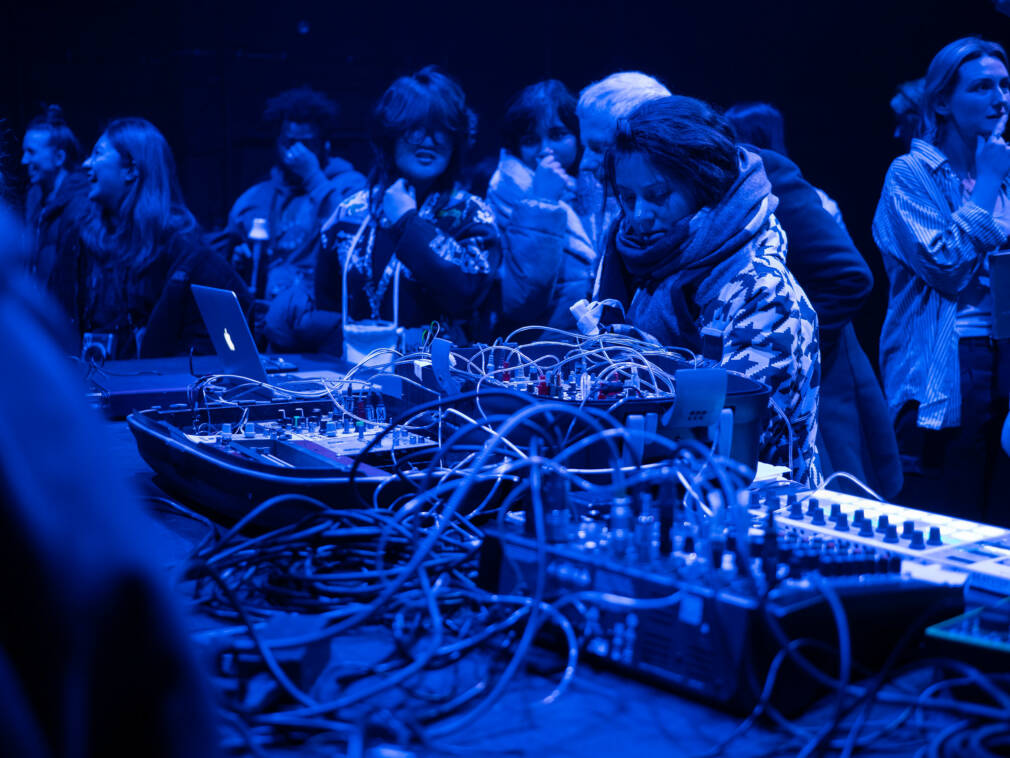
Videographer Jan Moss, who participated in much of the Afropollination experience in Uganda behind the lens screened his film Singeli Movement: Greed for Speed which featured Sisso, Maiko, Jay Mita and others, followed by a performance with Jay Mitta himself.
The newly dubbed supergroup 3OK (Zoë Mc Pherson, Jay Mitta, and DJ Diaki) with Nana & Zai performed at Berlin’s legendary Berghain club (no photos allowed). Binghi and Astan Ka, the residency outfit of Bloomfeld, Phatstoki & Miziguruka named INSHINZI, Menzi and Debmaster… Everyone got a chance to showcase the fruits of the collaboration at one of the world’s most prestigious electronic events.
There was also the COSMO Radio Festival in Dortmund, which in Astan Ka’s words, was “a perfect cosmos” of people, and a celebration of all that was created during the residency.
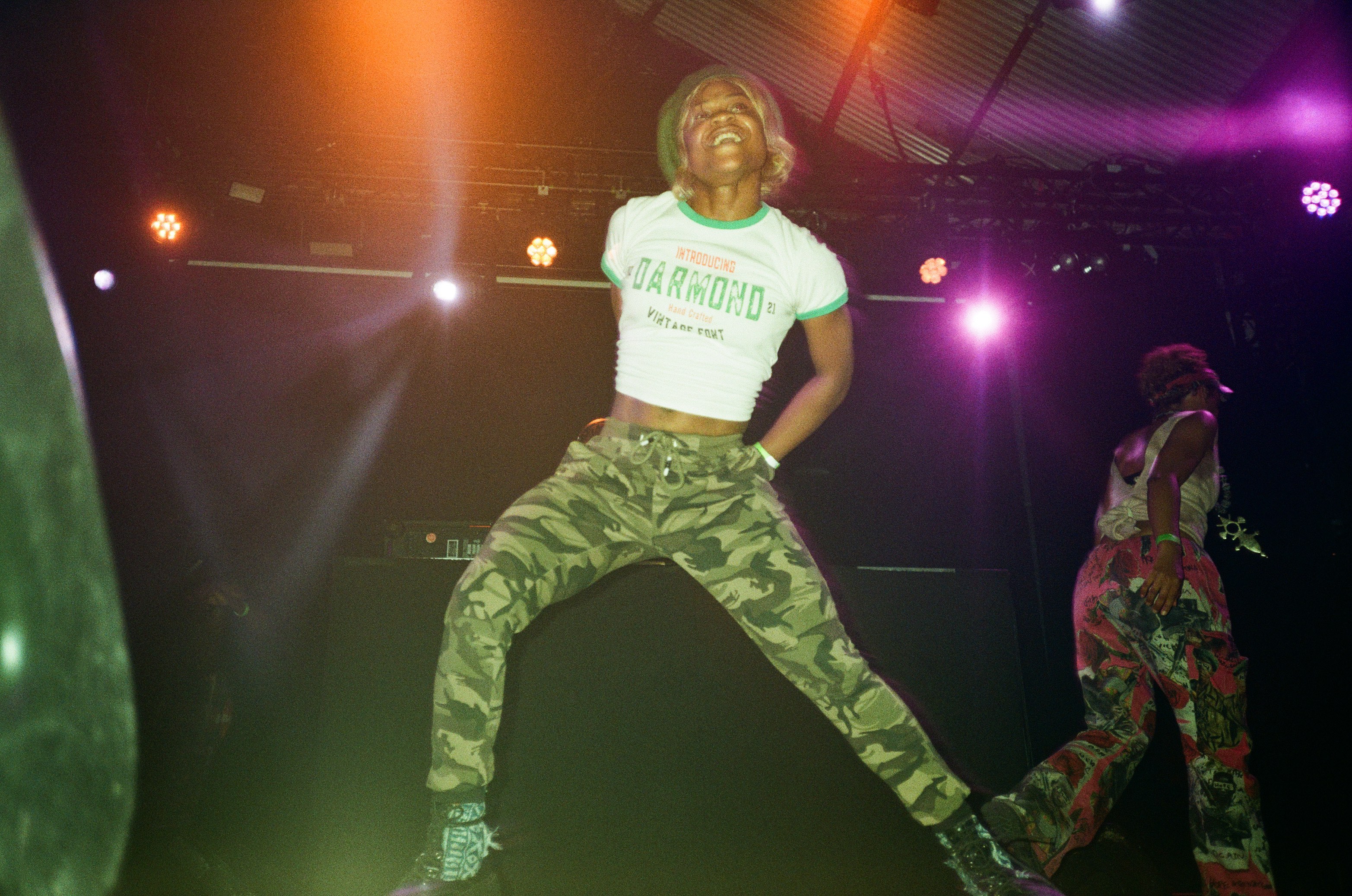

Finally there was the Festsaal Kreuzberg, Afropollination’s closing event.
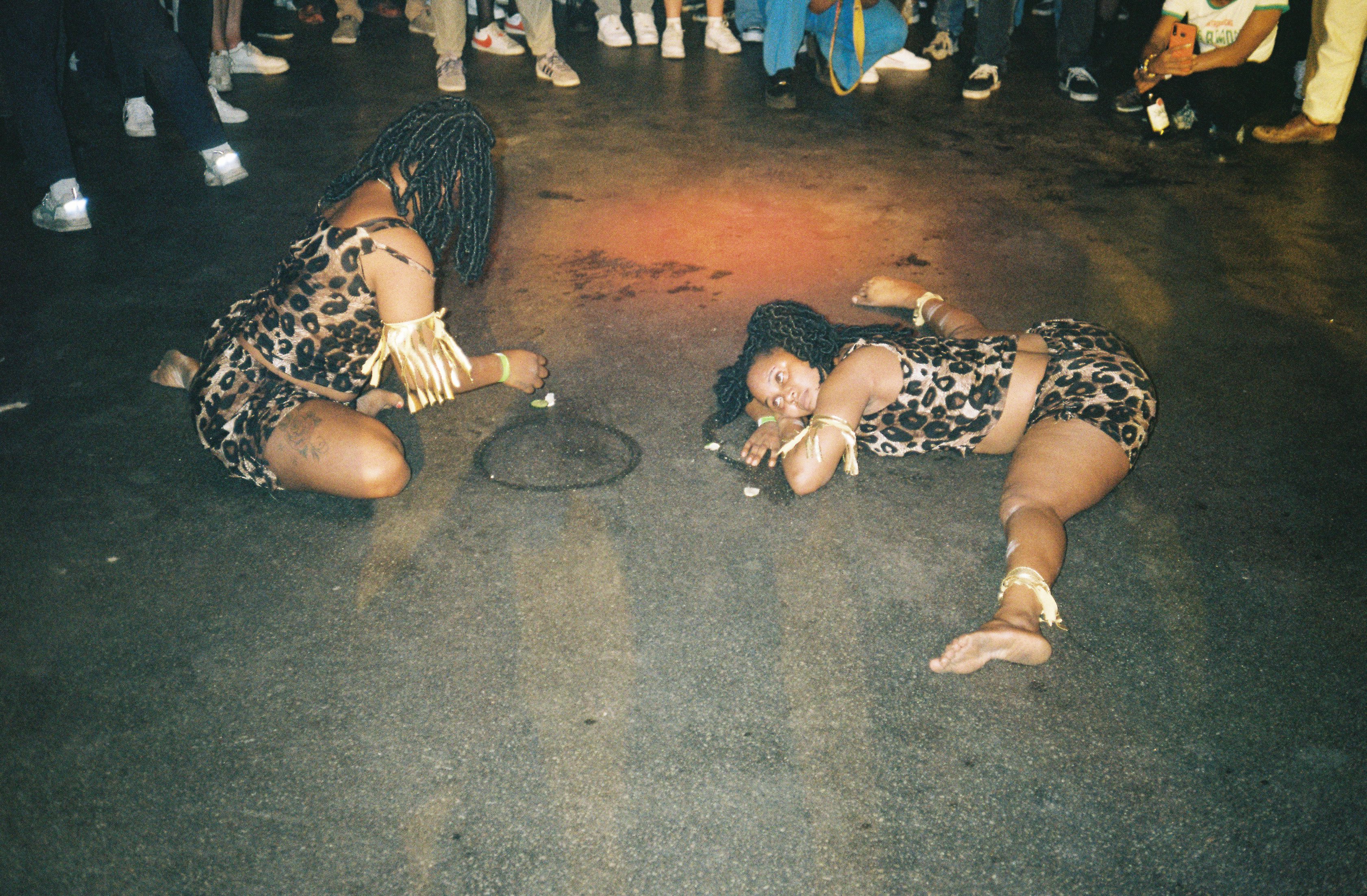
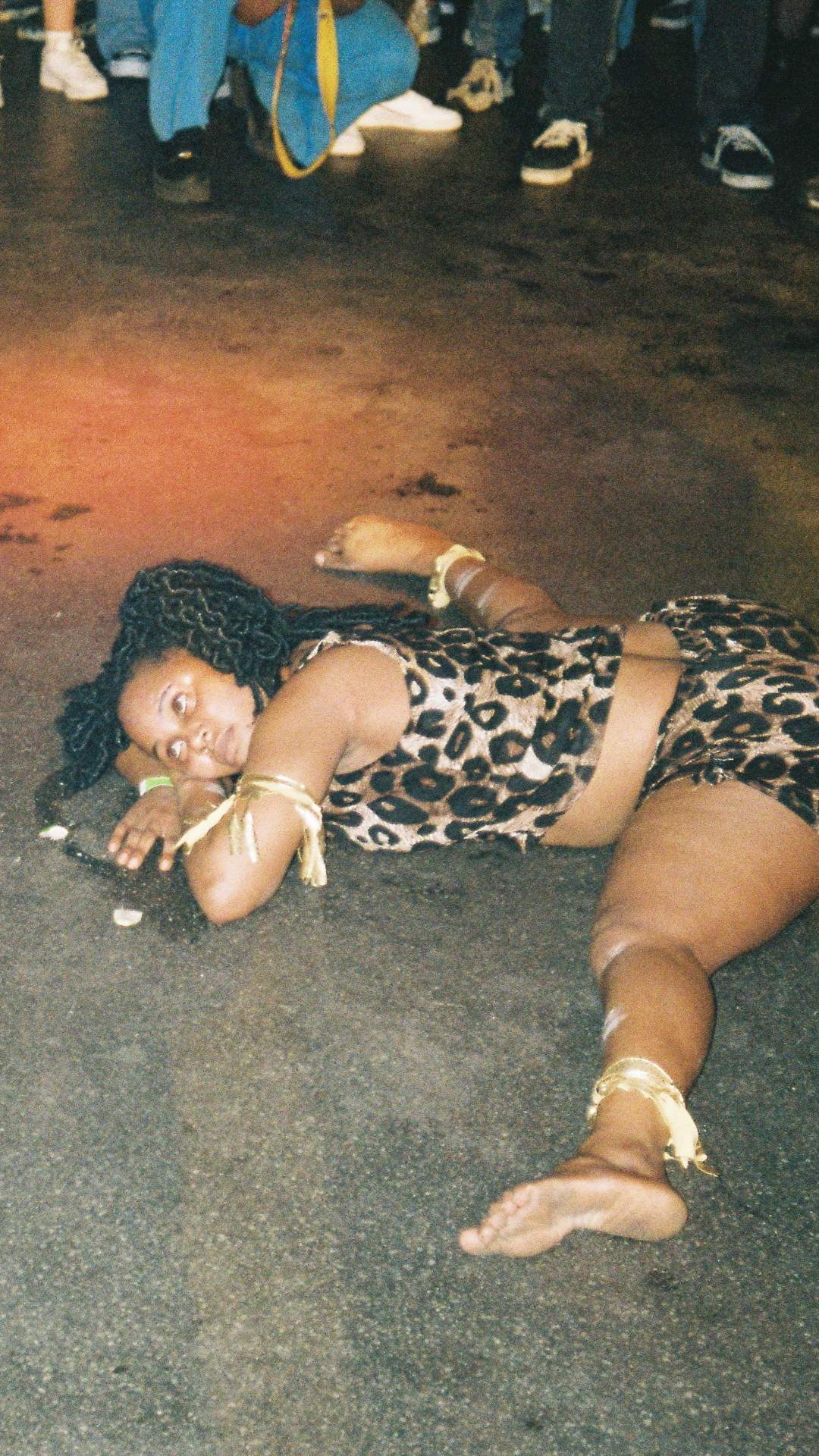
There were dance tutorials from the likes of Exocé, Nana, and Zai,

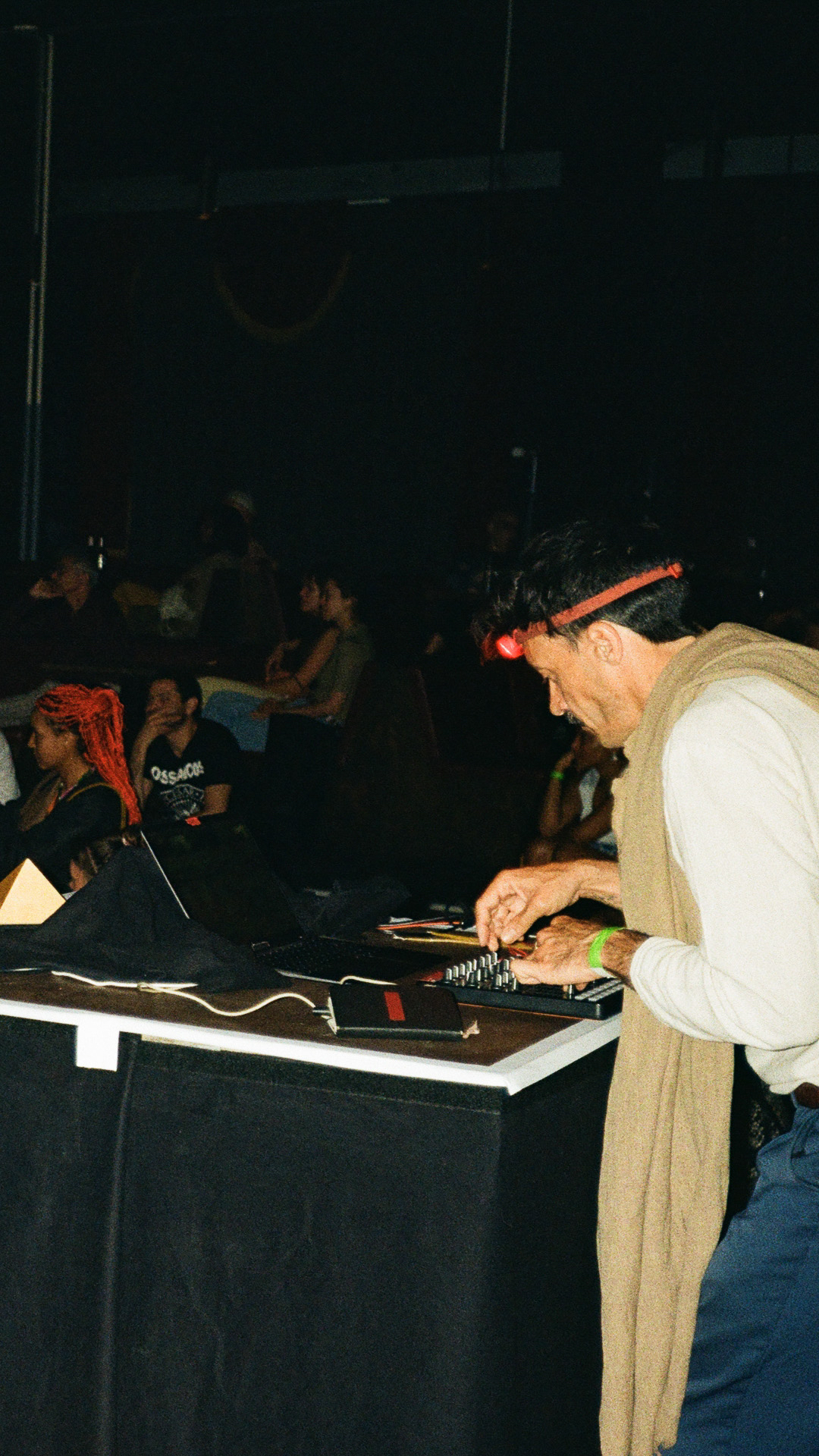
live cinema with Vincent Moon,
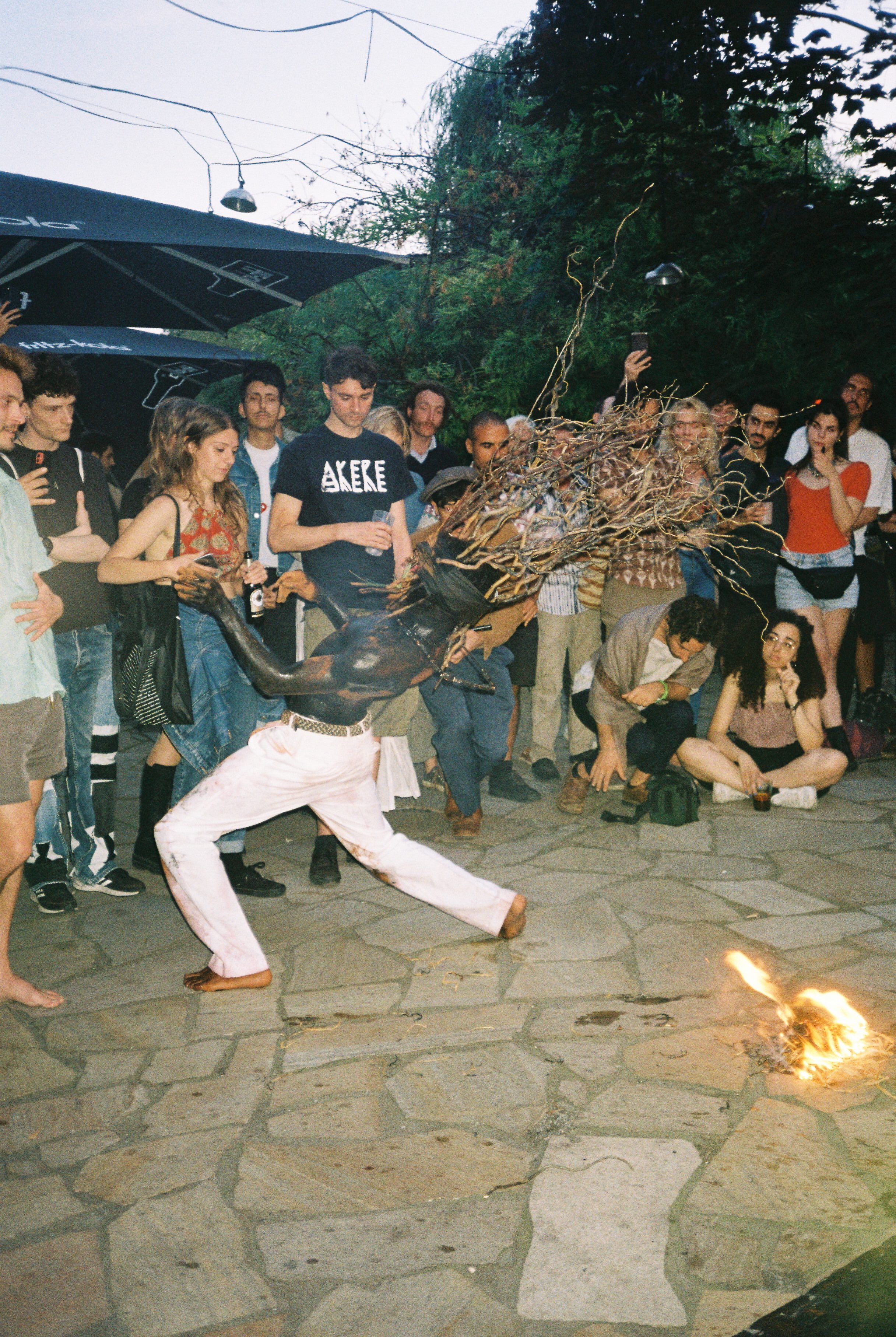
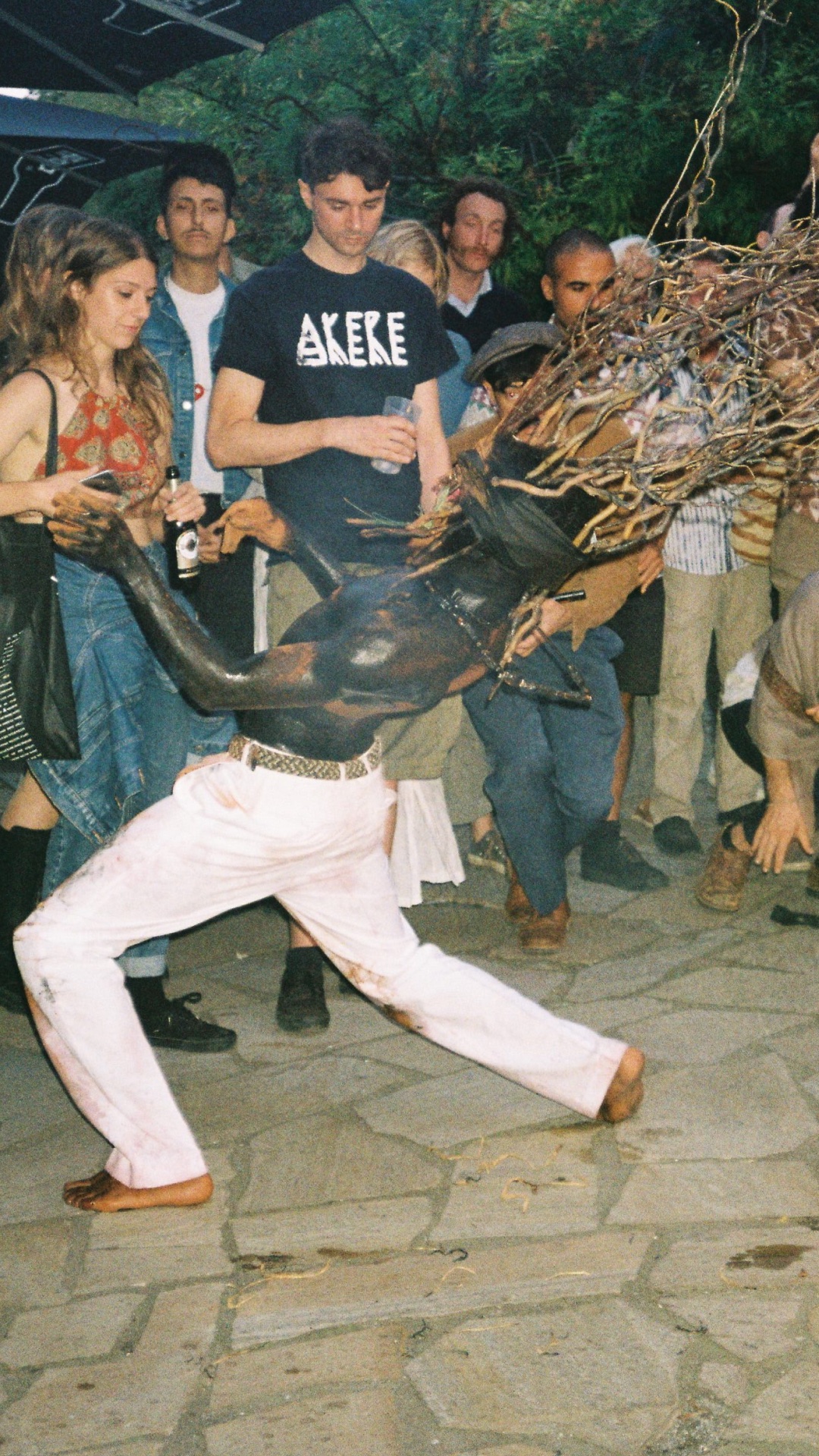
dance performances with Zora Snake,


and a club night that gave the stage to the Afropollination artists and groups,
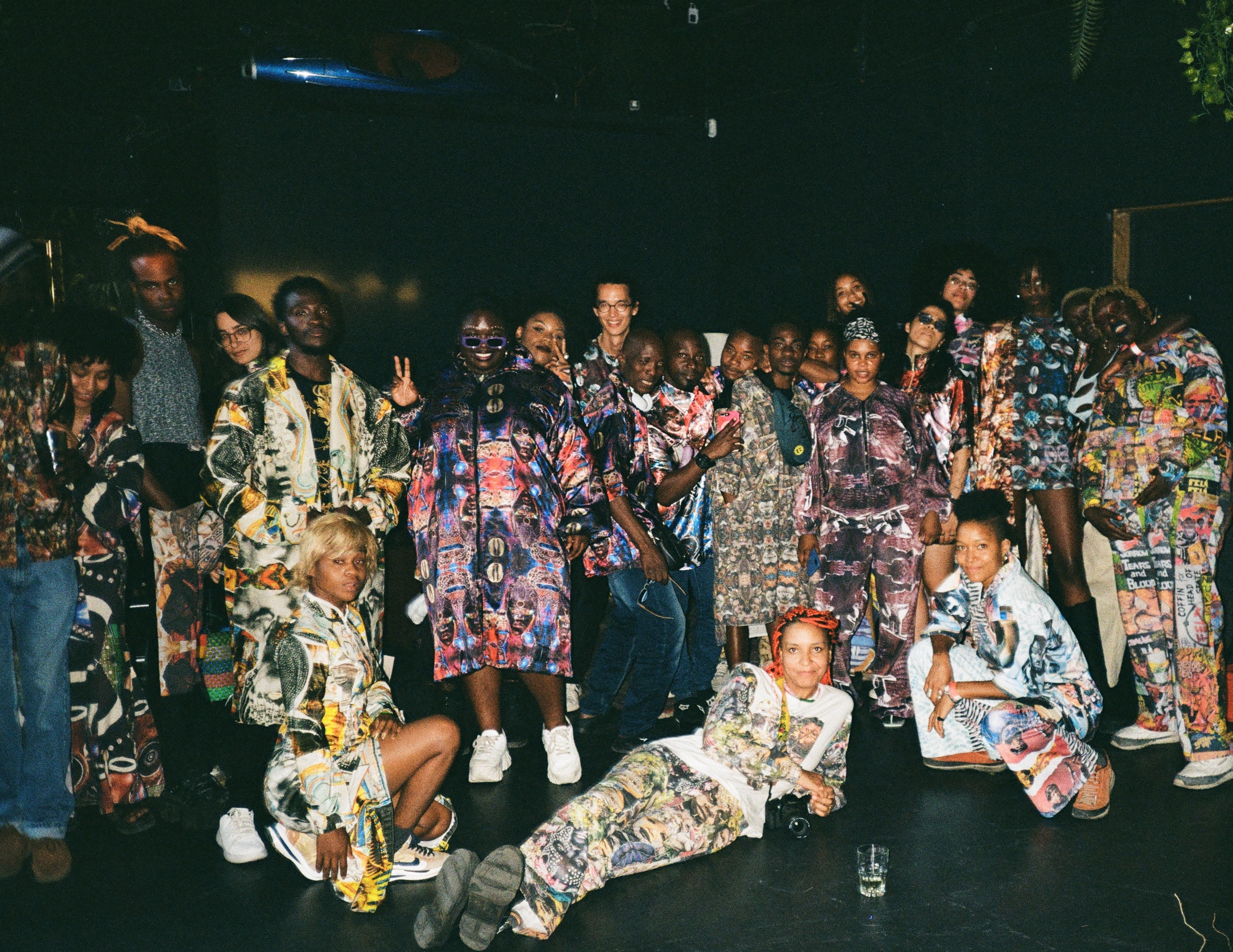

all while wearing the collage-fashion of Exocé’s Kasapio brand. From the outside looking in, Afropollination had successfully pollinated the community.
Do it for the culture
Photos, clips, snapshots, texts, and memories… The true legacy of the residency lives in the resonance of the people involved. How each individual will operate differently in the world. An echo of influence, a newfound corridor of knowledge, a friend. For some it meant broadening their own horizon. For others, getting back in touch with their ancestry. Old spaces were reclaimed anew. Fishing vessels become performance venues. The inward looking electronic elite of a place like Berghain offered stages to the emergent global underground. Muddy footprints washed away above the gushing Nile. The light and shapes of Kampala imprint themselves on film and hard-drives. Above all remains a notion of the explosive power of creativity when people are brought together, no matter how disparate or distant. It can be spontaneous or deliberate. Challenging or easy. Reach out and open the door. After, nature will take its course. If groups stay together, if names are forgotten… Residencies aren’t products, but a process. And after the chaos and whirlwind of creation, all that’s left is to let things bloom.